

ADVENTURES Inspiring Journeys NORTHWEST SUMMER 2024 FREEtake-enjoy-share West Coast Trail Ptarmigan Traverse A Poetry Pilgrimage Whatcom Arts and Culture Guide Inside! 2024

Here for healing Committed to your health and well-being. peacehealth.org




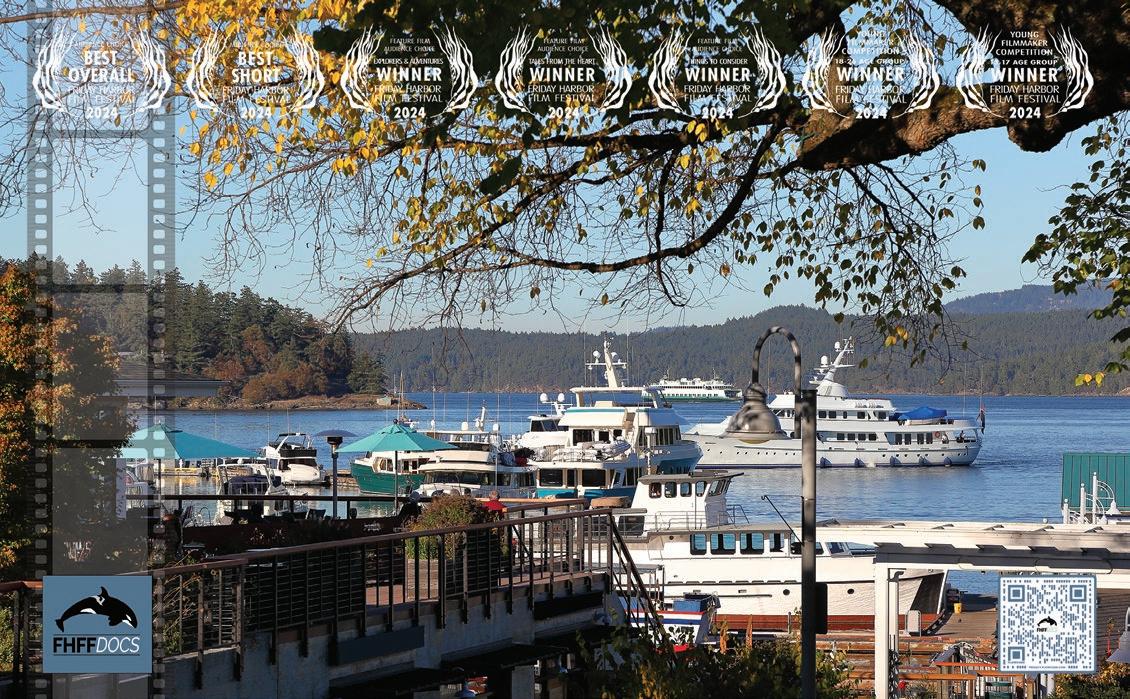



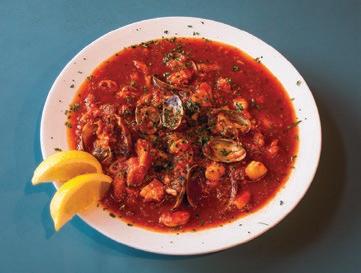


4 The heartbeat of Cascadia Friday Harbor, WA OCTOBER 24 - 27, 2024 2024 FRIDAY HARBOR documentary FILM FESTIVAL FHFF. org Discover year-round events: 997 1317 Nor th St ate Street , Bellingham 360.714.018 8 da n na sc a feit a lia no.com First come, first served. Open Thursday – Monday 4pm-9pm • Dine In • Take Out • Online Ordering 1319 North State Street, Bellingham Bellingham’s Favorite Italian Restaurant Since 1997 Specializing in fresh, handmade pasta and ravioli, homemade bread, and many other favorites prepared from scratch daily along with beer, wine, cocktails, and gluten-free options available.




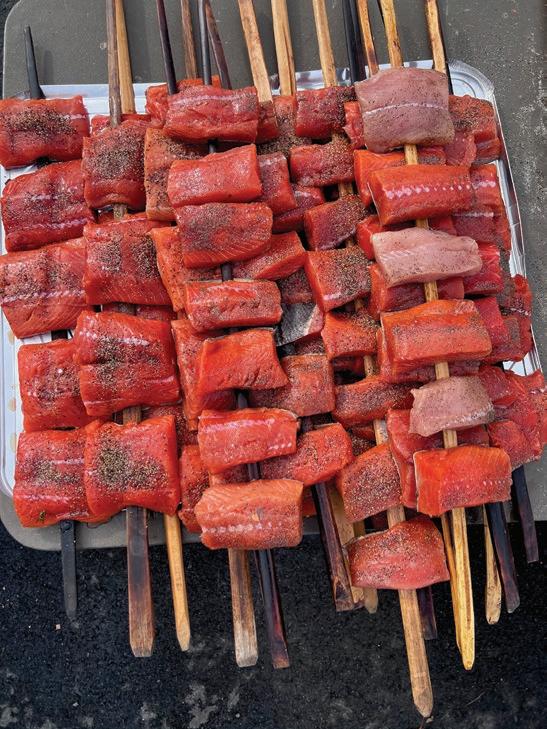



FROM SEA TO ME 2024 Saturday & Sunday OCT 5 & 6, 2024 OCT 5 & 6, 2024 ZUANICH POINT PARK FISHERMAN’S PAVILION ZUANICH POINT PARK FISHERMAN’S PAVILION Bellingham, Washington BELLINGHAMSEAFEAST.ORG @bellinghamseafeast BELLINGHAMSEAFEAST.ORG Food Vendors . Beer & Cider Garden . Live Music . Lummi Nation Traditional BBQ Salmon . KISS Cooking Demos . Dockside Seafood Market . Education & Outreach Booths . Boat Rides and Tours . Family Friendly Activities & More! SEAFOOD . MUSIC . CULTURE SEAFOOD . MUSIC . CULTURE THANK YOU TO OUR PARTNERS KISS KEEP IT SIMPLE SEAFOOD PRESENTS CATCH OUR MONTHLY COOKING DEMOS Third Saturday of each month during Bellingham Dockside Market. Details at bellinghamseafeast.org/kiss.
“In summer, the song sings itself.” - William Carlos Williams
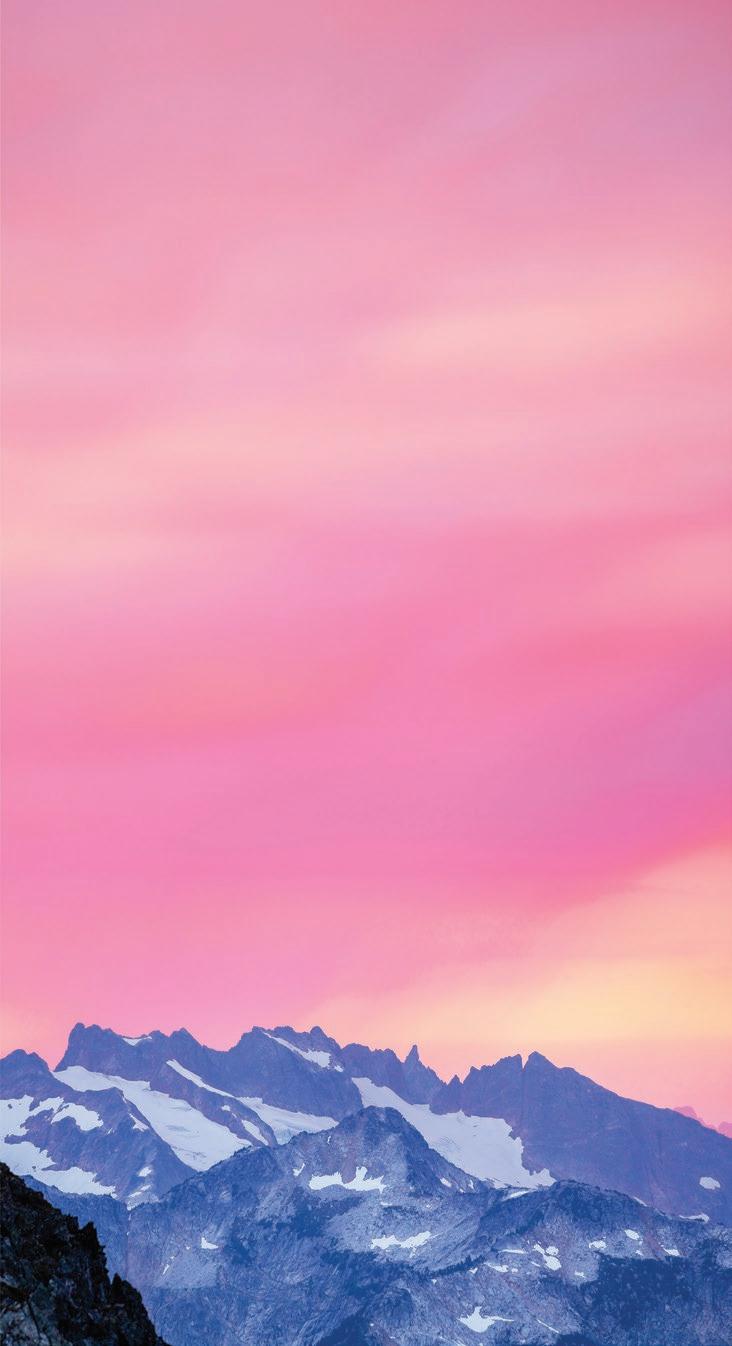

For over 50 years LFS has served the Pacific Northwest boating and outdoor communities with exceptional service and pricing. Our products range from top-quality outdoor apparel that is guaranteed to keep you dry, to premium boating and fishing supplies that keep you on the water longer. Visit us at the entrance of Squalicum Harbor and let us help you gear up for your next adventure, because Northwest adventures begin at LFS Marine & Outdoor.
The heartbeat of Cascadia 7 INSPIRATIONS IN THIS ISSUE DESTINATIONS A Journey to Remember Three Days on the Ptarmigan Traverse Wyatt Mullen 16 A Mountain Poetry Pilgrimage Roger Gilman 22 The Magnificent North Cascades John D’Onofrio 28 Life on the Edge Lessons Learned on The West Coast Trail Stephen Grace 32 Whatcom Land Trust & Rand Jack Celebrating 40 Years of Conservation Claire Johnston 48 Contributors 9 Summer’s Gift 10 Out & About 12 3 Great Hikes ... for Summer 13 eARTh: The Art of Nature 43 Peak Experiences 46 Bright Lines: Sam Green 51 Cycology 52 Field Trip: Fairweather Range 54 Cascadia Gear 56 The Next Adventure 58
Northwest Adventures Start Here. 851 Coho Way, Bellingham, WA 360-734-3336 • 800-426-8860 Shop LFS online at Go2marine.com. Free shipping on orders over $99. Use code ADNW24 for 10% off your first order! Coupon valid for website orders only.
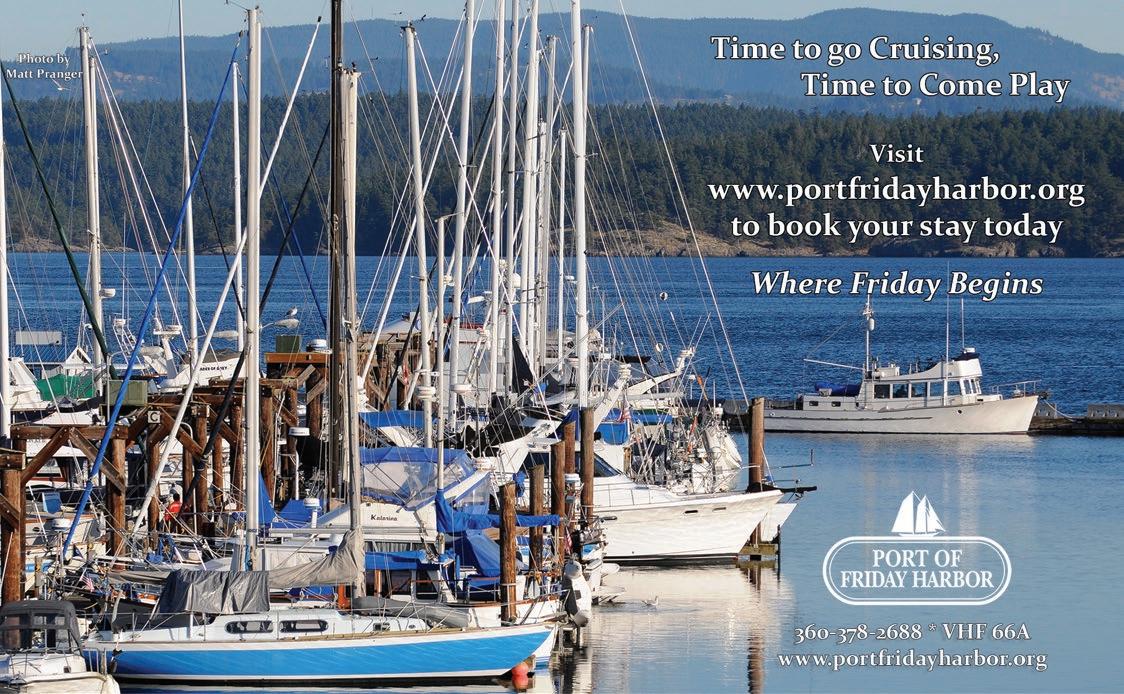
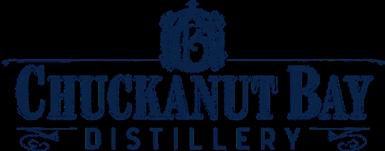



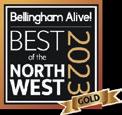
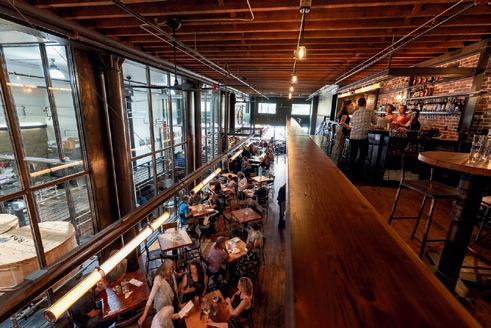

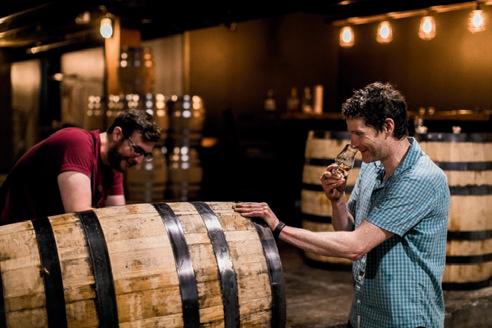
8 The heartbeat of Cascadia >>> Go to to read ANW AdventuresNW.com TripAdvisor's #1 for Food & Drink Activities in Bellingham, WA RooftopBar Spring/Summer! 1311 CORNWALL AVE, BELLINGHAM �hu��anutba�disti��er���om � ����� ���-���� Open Tues - Sun, see website for hours TASTINGS & TOURS BAR & RESTAURANT PRIVATE EVENTS
Voted “Best New Restaurant”
CONTRIBUTORS

The poet Roger Gilman lives in Bellingham and can be found around the Northwest along Cascade Mountain streams and in Puget Sound salt marshes fly fishing and birding for poems. Formerly the poetry editor of The Chicago Review, he served as Dean of Fairhaven College at Western Washington University. Roger currently serves as Poetry Editor of Adventures Northwest

Stephen Grace has authored many books, including “Dam Nation: How Water Shaped the West and Will Determine Its Future ” and “Grow: Stories from the Urban Food Movement,” which won the Colorado Book Award for Creative Nonfiction. He explores the Northwest’s natural history by snorkeling, paddleboarding, skiing, trail running, and backpacking.
of creative interests, including painting, ceramics, sculpture, poetry, and music composition. Visit him at JamesHardman.com.
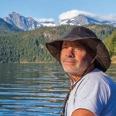
David Inscho is a believer in coffee, beer, and the profound power of Wilderness. When not at his day job, he can be found cruising on his sailboat or backpacking with his camera in the nurturing silence of our public lands. Visit him at david-inscho.smugmug.com.


Born and raised in Skagit County, WA, Wyatt Mullen is a landscape photographer and science communicator interested in the impacts of climate and weather on alpine regions. He spends much of his time trail running, skiing, and backpacking throughout the greater North Cascades ecosystem. Visit him at wyattmullen.com.
Sam Green was appointed the first Poet Laureate of Washington in 2007. The author of twelve poetry collections, he lives in a log house that he built himself on Waldron Island, WA. “Otter” is included in Green’s latest collection, Disturbing the Light, Carnegie Mellon University Press.

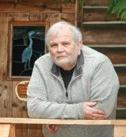
Claire Johnston serves as Whatcom Land Trust’s Communications Director, where she helps grow a conservation-minded community. She holds a B.S. in Environmental Science and Resource Management from the University of Washington. When Claire is out of the office, you can almost always find her on a trail accompanied by her dog, Chowder.
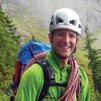
John Minier is the owner and lead guide at Baker Mountain Guides. Originally from Alaska, he has a deep appreciation for wild and mountainous places. Since 2004, he has worked across the western U.S. as a rock guide, alpine guide, ski guide, and avalanche instructor.
Cathy Grinstead was born and raised in northern California, where she spent her summers backpacking in the Sierra. In 2018 she retired from veterinary practice, and moved to Bellingham to explore a different part of the world. She enjoys hiking, outrigger paddling, and snow sports, and loves all that Bellingham has to offer!
James Hardman grew up in Edmonds, WA, and studied painting at Fairhaven College in Bellingham. For the past 45 years, he has lived in a small beach cabin on the north shore of Orcas Island, where he has pursued a number










Alan Sanders is a photographer and photo educator based in Birch Bay, WA. He has photographed all over the West, from Central America to Alaska. As a recovering commercial photographer, he now prefers to make fine art photographs for his own enjoyment. Learn more at alansandersart.com

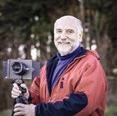
Paul Tolme, the Journalist on the Loose, is an outdoors writer, award-winning environmental journalist, and blogger for Cascade Bicycle Club. He lives with his wife in a Seattle houseboat crammed with bikes, skis, snowboards, kayaks, and paddleboards but no regrets. His work can be seen at paultolme.com and cascade.org/news.


The heartbeat of Cascadia 9 stories & the race|play|experience calendar online.
Volume 19. Issue 2 SUMMER | 2024 John D’Onofrio Publisher/Editor john @ adventuresnw.com Oksana Brown Accounting accounting @ adventuresnw.com Adventures Northwest magazine www.AdventuresNW.com Distribution: Sherry Jubilo, Aaron Theisen, Bigfoot Distributing, JM Distribution Adventures Northwest magazine is printed by Lithtex NW Printing Solutions, Bellingham, WA. Jason Rinne Creative Director jason @ adventuresnw.com Roger Gilman Poetry Editor roger @ adventuresnw.com Catherine Darkenwald Print & Digital Account Manager catherineadventuresnw @ gmail.com Ethan D’Onofrio Digital Media ethan @ adventuresnw.com Alicia Jamtaas Copy Editor lish @ adventuresnw.com Cathy Grinstead Social Media cathy @ adventuresnw.com Alan Sanders Photo Illustrations alan @ adventuresnw.com CO2 NEUTRAL COVER PHOTO: Trappers Peak by Wyatt Mullen 800-925-1875
SUMMER’S GIFT
TheNorth Cascades are a world unto themselves, a vast cavalcade of mountains, empty, for the most part, of people. Sure, there are places in these mountains that, these days, attract a crowd. But there are also many places where solitude can still be savored, and silence can still be heard. Places where cell phones don’t work and the passage of time is measured by passing clouds. It’s interesting how one’s psychology changes when one spends quality alone time in the mountains, giving rise to a kind of mindfulness that soothes mind, heart, and soul—a reconnection to simple joy.
need to stay on the established trails, pack out their garbage, and leave their Bluetooth speakers at home.
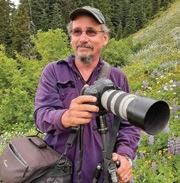
This great gift should not be taken for granted. More than ever, it is essential to practice no-trace ethics and to treat these untrammeled places with reverence and respect. As the number of visitors increases, the need for awareness—both environmentally and socially—grows commensurately. Visitors absolutely


We owe an outstanding debt of gratitude to those who fought—and fought hard—to set these lands aside and preserve their wild nature. We are incredibly fortunate to have such a magnificent wilderness right in our backyard.
And now, our glory season—summer—is on the way here in the place where summer shines brightest, illuminating fields of dew-glistening wildflowers in the morning sun, the angelic end-of-day light shining on spires still streaked with snow and a night sky that awakens the imagination.
Summertime is our great gift here in the hallowed lands of Cascadia. It’s time to venture out of your comfort zone and throw open the doors of perception to embrace the wide, wonderful world. To regain perspective. To lose your mind and come to your senses.
Happy Summer!
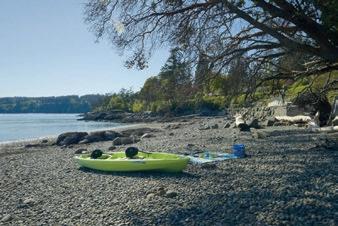

Presenting:
8480 Thompson Beach
Fully licensed B&B or wonderful single or multigenerational home with 150 ft beach and stunning views.

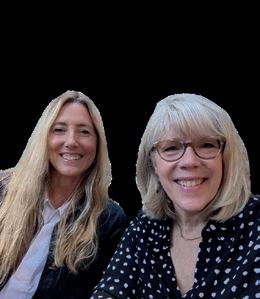
Contact the Burgon|Farrell Team for more information: 360-393-7339 diana@burgonfarrell.com




10 The heartbeat of Cascadia >>> Go to to read ANW AdventuresNW.com
Rd. Anacortes WA 98221
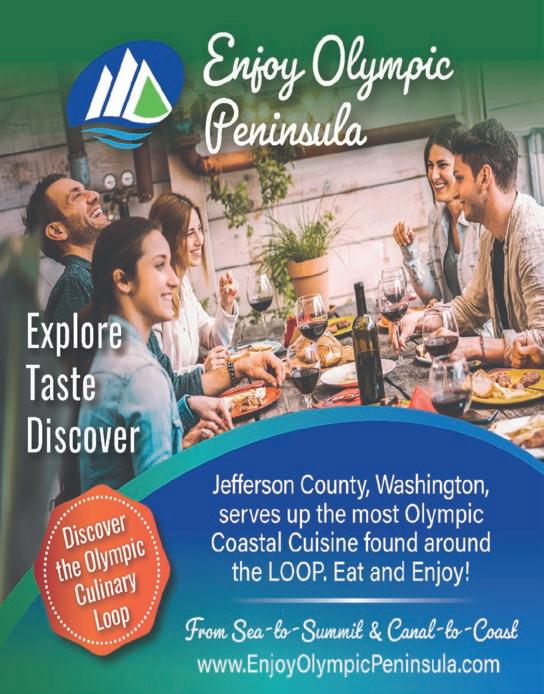
SPORT BY DAY MUSIC BY NIGHT.

THE MARCELO ERA BEGINS JUNE 30 » JULY 21 2024
SURROUNDED BY BEAUTY, INSPIRED BY MUSIC | BELLINGHAMFESTIVAL.ORG

The heartbeat of Cascadia 11 stories & the race|play|experience calendar online.

&Out About
The Return of the Chuckanut Classic
After a four-year hiatus, the Chuckanut Classic returns to Whatcom County on Saturday, September 7. The Classic is the signature event of the Mount Baker Bicycle Club (MBBC) and traces its roots back to 1979. This year’s ride starts and ends on the Bellingham waterfront near the Portal Container Village, offering routes from 10 miles to a full 100-mile century. MBBC expects 250 to 350 riders.
The 2024 edition of the classic is the first since 2019. The club canceled the 2020 ride due to COVID, and the COVID omicron surge derailed the 2021 ride. Meanwhile, the nonprofit bike club’s board was going through a leadership transition, a process exacerbated by the pandemic and its aftereffects.
“In March 2020, we were set to do ride leader training and ramp up for spring

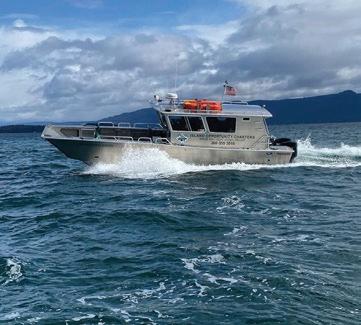
and summer rides,” remembers Hilary Higgins, past club president. “I was already on the lookout trying to identify new potential leaders to succeed me, but when the pandemic hit, we simply shut down club activities.”
The future of the classic was uncertain.
Current club president Chris Casquilho, a persistent but casual cyclist and commuter for decades, had increased his biking during COVID. “It was a way to get outside and keep a grip on reality,” he says. When life started returning to normal by 2022, Casquilho began looking for new opportunities to ride.
“I stumbled into some information online about the Chuckanut Classic here in Whatcom County,” Casquilho says, “and thought it looked like just the right thing!”
Motivated to restore the Chuckanut Classic for the community, he reached out to Higgins in the fall of 2022.
After meeting with the MBBC board, Casquilho, who has a background in nonprofits, communications, and event planning, was “impressed with how

dedicated they were to sharing their love of cycling with the community.”
2023 was a year of slowly rebuilding the club, reestablishing the board, finding other board officers, strengthening the membership base, and rebuilding infrastructure.
“This year, we got all our ducks in a row, we’ve got great sponsors and volunteers lined up, and we’re excited to share this awesome ride with our community once again.”
The lead sponsor for the ride is Sanitary Services Company, with additional sponsorship from Western Solar, Great Harvest Bread, WECU, and Adventures Northwest Magazine
Learn more at chuckanutclassic.org



12 The heartbeat of Cascadia >>> Go to to read ANW AdventuresNW.com
Tractor Trot June 15th, 2024 Chuckanut Foot Race July 6th, 2024 Lake Padden Relay August 24th, 2024 GREATER BELLINGHAM RUNNING CLUB www.gbrc.net MISSION CONNECTING RUNNERS. BUILDING COMMUNITY. GIVING BACK. For more info on membership or these upcoming events: 1000 Harris Avenue, Bellingham goodearthpots.com Celebrating 55 Years Supporting Pacific Northwest Clay Artists!
360.355.3610 islandopportunitycharters.com Serving The San Juan Islands from Bellingham Island Water Taxi Freight/Small Delivery Services Custom Charter & Sight Seeing
The Mount Baker Bicycle Club. Photo courtesy MBBC
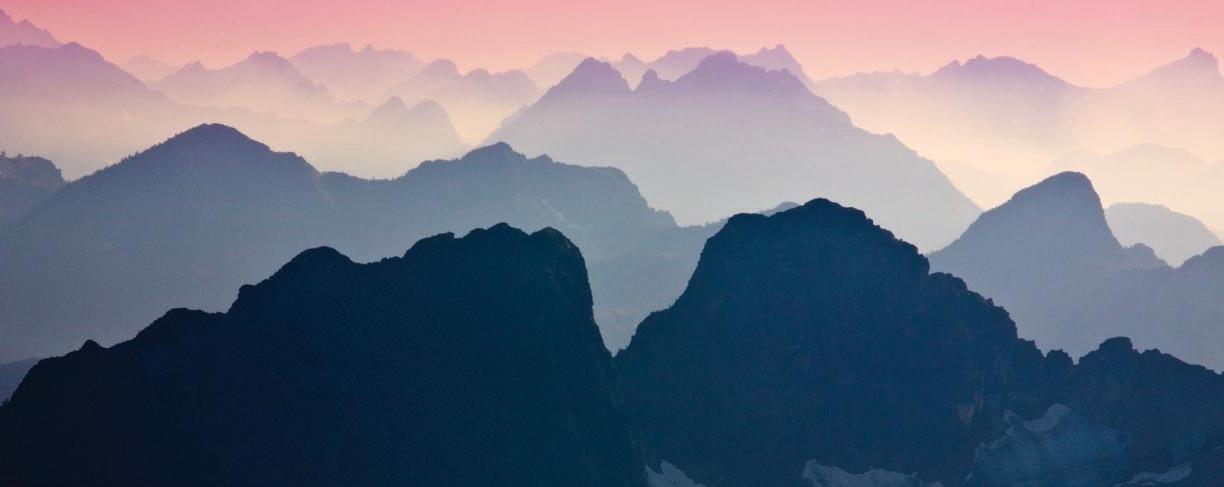
Friday Harbor Film Festival: Entertainment, Inspiration, and Enlightenment
Founded in 2013, the Friday Harbor Film Festival is celebrating its 12th anniversary this year; the festival celebrates our connections to the planet—and each other, screening award-winning documentaries highlighting the natural environment and people of the Pacific Northwest. The films focus on stories that enkindle hope and healing, intended to inspire viewers to become ‘a part of the solution’.
The festival takes place annually in late October, consisting of an In-Theatre, 4-day event followed by a week-long On-Demand festival, drawing filmmakers from across the country and overseas. A vital part of the festival’s mission is to encourage students to learn the art of storytelling through film by participating in the Young Filmmakers Showcase. The László Pal Emerging Filmmaker Award recognizes the creator of the festival’s best student short film.
This year’s screenings are scheduled for October 24-27, but in the meantime, a Best of the Fest Documentary Series featuring films from the 2023 festival will offer such stirring films as The Great 14th: Tenzin Gyatso, The 14th Dalai Lama In His Own Words (June 1), Mama Bears (June 14), Patrick and the Whale (July 12), Covenant of the Salmon People (August 9), and Common Ground (September 13). These screenings, presented free to the public, take place at the San Juan Community Theatre, San Juan Grange #966, and the San Juan Island Library in Friday Harbor. Many films also feature Q&A sessions with the filmmakers.
Learn more at www.fhff.org
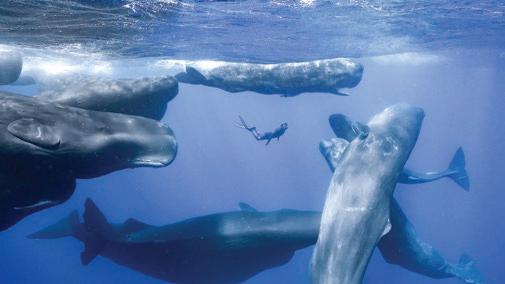

3 Great Hikes for Summer Heliotrope
Ridge
After a two-year hiatus caused by the closure of the Glacier Creek Road due to a massive washout, the Heliotrope Ridge Trail has regained its place among the supreme hikes around Mt. Baker. This iconic trail climbs 1400 feet in a scant 2.2 miles to reach the icy ramparts of the Coleman Glacier cascading down beside alpine meadows adorned with summer wildflowers. Several unbridged creek crossings can be daunting (or impossible), but the opportunity to get up close and personal with the glacial ice is an aesthetic delight. Koma Kulshan’s summit seems close enough to touch.
Trailhead: Glacier Creek Rd. (FR-39), 13 miles from the Mt. Baker Highway (WA-542). Northwest Forest Pass required.
Image Lake
Image Lake, located in the Glacier Peak Wilderness, is a place that every lover of the North Cascades should visit at least once in their life. I first made the trek back at the dawn of time (in 1982) and have been fortunate enough to have returned several times over the years. Visiting this beautiful tarn requires a commitment— and at least a few days. From the trailhead, hike 9.4 miles through the beautiful green rainforest beside the Suiattle River and then up, up, up to attain Miner’s Ridge. You’ll have climbed 4400 feet by the time you reach the lake, so you’ll want to stay a while. The expanse of Miner’s Ridge is a feast for the senses, with non-stop views of the surrounding peaks. A day spent wandering here will be a day to remember. Image Lake itself is a paradigm of Cascadian beauty—at day’s end, Glacier Peak reflected on the water’s surface will make it obvious how the lake got its name.

Trailhead: The end of the Suiattle River Rd. (FR-26), off WA-530, 8 miles north of Darrington, Northwest Forest Pass required.
Tiffany Mountain



BURLINGTON,WA
Here’s a chance to summit an 8,242-foot-high peak—in June! The 3-mile-long hike up Freezeout Ridge gains 1685 feet en route to Tiffany’s craggy summit. Located on the eastern margins of the Cascades, it begins in burned-over lodgepole pine forest but quickly ascends to wide-open meadows. At the Whistler Pass junction, go left, and—after a half mile of grunting—you’ll enjoy views from the rubble-strewn summit of the Cascades to the west and the Columbia Plateau to the east. Make no mistake: Tiffany Mountain is a long way from anywhere, and no matter where you’re coming from, it involves a lot of driving on bumpy roads, but its isolated location means that you might just have it to yourself.
Trailhead: Drive the East Chewuch River Road approximately 6 miles north of Winthrop, turn right on FR-37. Drive for 11.5 miles. Take a left on FR-39 for 3.2 miles to Freezeout Pass and the trailhead on the right. No permit required.
The heartbeat of Cascadia 13 stories & the race|play|experience calendar online.
Photo by John D’Onofrio
V I S I T B U R L I N G T O N W A . C O M H O M E O F B E R R Y D A I R Y D A Y S T H I R D W E E K E N D I N J U N E Jammed Packed Adventures in
Patrick and the Whale screens on July 12 at the San Juan Island Library





14 The heartbeat of Cascadia >>> Go to to read ANW AdventuresNW.com bellingham.org /plan “Spring Table”by Deb Dole Whatcom Art Market Open Daily 11 - 6 whatcomartmarket.org Bloom Therapeu�c Massage lymphatic prenatal bloommassagebellingham.com 360.820.0334 Jenny Reid, LMT Lic #MA60015176 Specializing in fer�lity, prenatal, visceral, lympha�c and therapeu�c massage. Conveniently located in downtown Bellingham. visceral
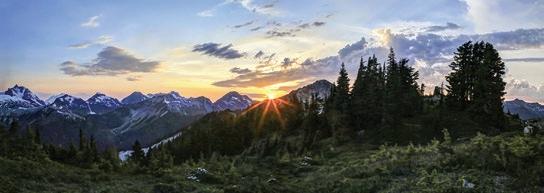
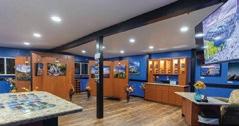
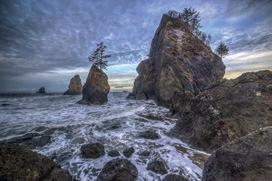


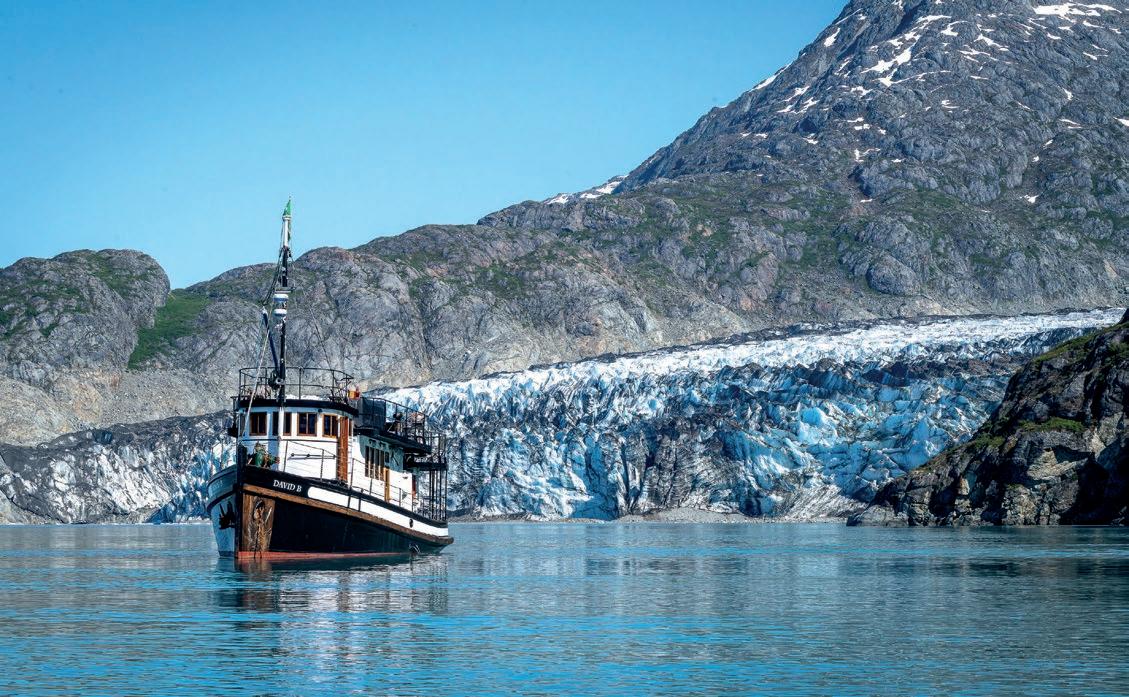
The heartbeat of Cascadia 15 stories & the race|play|experience calendar online.
Embrace the wild and experience Alaska’s unforgettable beauty. Small Ship Cruises Aboard the David B Alaska – Inside Passage – San Juan Islands NorthwestNavigation.com “It just got better and better every day, from serenely calming and peaceful to heart pounding excitement. We learned so much from you all and will never forget your warmth, your generosity and your humor. Loved spending this wonderful time with you all. Many thanks!” Ann F. & Dave W • 2023 – Alaska Cruise andyporterimages.com Experience the Beauty of the Pacific Northwest! THE ANDY PORTER GALLERY Aluminum and Canvas Prints, Greeting Cards, Post Cards, Magnets, Night Lights and More! 306 Morris St. La Conner | Open Saturdays and Sundays: 10am to 7pm Now offering Basic Photography & Photoshop Editing Classes
Adventure Awaits!

A Journey to
16 The heartbeat of Cascadia >>> Go to to read ANW AdventuresNW.com
Remember Three Days on the Ptarmigan Traverse
Story and Photos by Wyatt Mullen
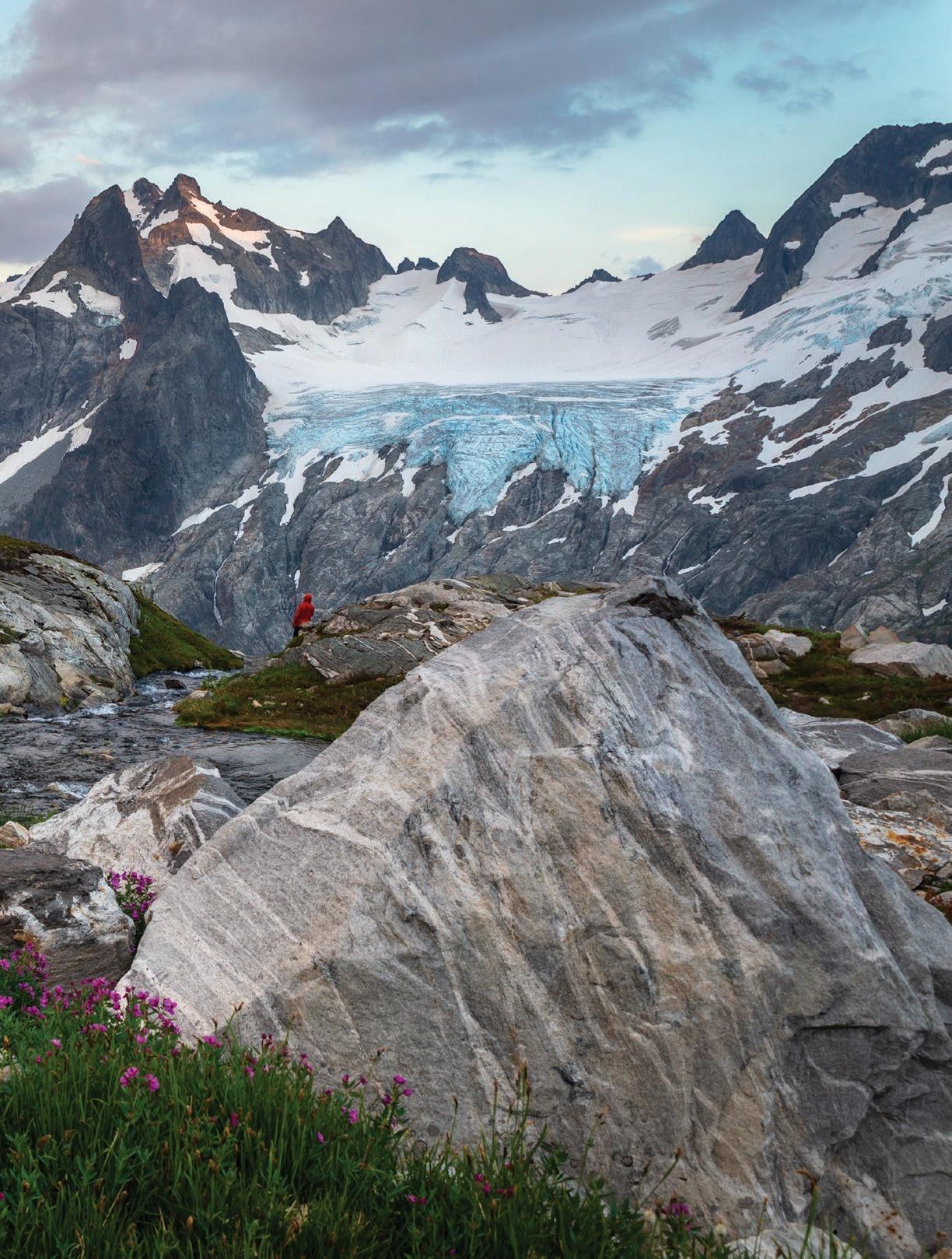
17 stories & the race|play|experience calendar online.
The heartbeat of Cascadia
Sunset at White Rock Lakes
Like so many Cascadian epics, the Ptarmigan Traverse begins with a car shuttle. But the four hours of bouncing between potholes along the Suiattle and Cascade Rivers give me time to get to know my adventure partners. I previously climbed with Anthony throughout the Cascades for a couple of months, but Ken is relatively unknown, and our planned schedule is ambitious, to say the least. How better to test a new partner than to challenge them on an accelerated threeday off-trail push over challenging terrain?
Ironically, the off-trail push begins at one of the most popular trailheads in the North Cascades. Warmth from the previous heatwave lingers overnight, but the glaciers hanging overhead assuage our fears that despite the distinctly “un-Cascadian” weather, we’re still in the depths of the American Alps. Morning dawns humid and murky. Wildfire smoke lurking nearby is forecast to blow out by evening, but a gray haze still lingers. As I set off, my pack weighed down with an extra ten pounds of camera gear; I’m thankful for the notoriously gradual switchbacks up to Cascade Pass. In just over an hour, we reach the pass and split from the main trail, following the well-worn tread towards Cache
Col. This unsigned trail, carved through the heather and stretching towards the remarkably rugged terrain south of the pass, first caught my eye in 2020 as I ascended Sahale Arm, and led me down a Ptarmigan Traverse research rabbit hole spanning time and space. Some 80 years after the Ptarmigan Climbing Club members completed the original improb-

able traverse, we are taking off on one of the premier mountaineering routes in the Lower 48.
As we cross steep snowfields and remnants of glacial ice to the crest of Cache Col, leaving the busy world of Cascade Pass behind, we are filled with anticipation for the adventure ahead. Mt. Formidable and the majestic Middle
Cascade Glacier dominate the skyline. And yet, even though the terrain suggests challenges that no liability-conscious forest service trail builder would dare to confront, a clear, boot-beaten trail continues through the wilderness. As we descend, we stumble upon a family of ptarmigan—a mother and four chicks— that zigzag through the heather. At the glorified tarn named Kool-Aid Lake, we encounter other wildlife. Chased off the summit of Hurry-Up Peak by oncoming rain, we spy a trio of mountain goats surrounding our backpacks where we left them far below. A nanny and her two kids wander the shore of the lake, partially camouflaged by the background glacier. We shoulder our backpacks and move on, passing over the terrain crux of the route without incident while coming face to face with the Middle Cascade Glacier.
The glaciers of the modern Ptarmigan Traverse are shadows of their twentiethcentury counterparts. Crossing them today remains relatively simple, but as they continue to retreat, steeper, looser rocks will be exposed, and challenges will mount. For now, the spectacular view from the Middle Cascade Glacier to the glacier-clad Sentinel Peak and the turquoise Le Conte Lake at its base remain, but one day both white and turquoise will fade. We set up camp on a viewpoint
18 The heartbeat of Cascadia >>> Go to to read ANW AdventuresNW.com
Descending into Cascadian Shangri-La
above the idyllic Yang Yang Lakes, a pair of aquamarine gems set in emerald green meadows, and watch distant thunderstorms cruise the skyline. Shifting gaps in the clouds allow heavenly rays to fall on the surrounding glaciers. To our right, a goat head pops up above the cliffs, and a pair winds their way down the slope. These goats are tenacious in their neverending quest for salt. They are aware that humans provide a source of salt in their urine, and even rocks tossed in their direction fail to dissuade them. We will need to pee far enough from our tent to limit the likelihood of nocturnal goat wrestling matches.
At day’s end, a small golden band straddling the western horizon illuminates the gathering clouds. Over the next half hour, the sun sinks, and a rich orange
light spreads, dazzling us with saturated color. Every second, the hue along the Cascade Crest shifts from gold to orange to red, then magenta. Finally, as darkness falls, we retire to our tents while the goats snuffle nearby.

Anthony and I wake to broken clouds. Ken has decided to remain in camp while we explore the upper reaches

of Mt. Formidable. A marine layer fills the west side valleys with clouds, providing a visually fascinating backdrop as we ascend the loose, class 3 face of Formidable. The wildly remote peaks of the Buckindy Group float on the cloud layer, embodying the classic Cascade alpine drama. Before we know it, we’ve reached the summit and bask, suspended in the sky, in the warm sunlight above endless summits. The wild crest of the Cascades snakes out below us, separating west from east and rainforest from desert as it slides from high alpine ruggedness to smooth forest cover. The giants of the range rise above the morning haze: Mt. Baker to the north, Glacier Peak to the south, and the massive bulk of Rainier hovering on the horizon.


The heartbeat of Cascadia 19 stories & the race|play|experience calendar online.
2024 Forbes Best-in-State Wealth Management Teams: Awarded January 2024; Data compiled by SHOOK Research LLC based on the time period from 3/31/22-3/31/23. (Source: Forbes.com) The Forbes Best-in-State Wealth Management Teams rating algorithm is based on the previous year’s industry experience, interviews, compliance records, assets under management, revenue and other criteria by SHOOK Research, LLC. Investment performance is not a criterion. Self-completed survey was used for rating. This rating is not related to the quality of the investment advice and based solely on the disclosed criteria. Fee paid for use of marketing materials.Wells Fargo Advisors is a trade name used by Wells Fargo Clearing Services, LLC, Member SIPC, a registered broker-dealer and non-bank affiliate of Wells Fargo & Company. PM-10192025-6566448.1.1
Toni L. Taft, CFP®, AAMS®, ADPA® Managing Director – Investment Officer Master of Science in Personal Financial Planning Josh G. Barrett Financial Advisor First Vice President – Investment Officer William J. Zollner Financial Consultant Vice President – Investment Officer Maricel Dalere Senior Registered Client Associate Jeremy Barrette Client Associate 23 Bellwether Way, Suite 200 Bellingham, WA 98225 www.taftbarrettwmg.com of Wells Fargo Advisors TAFT BAR RETT WEALTH MANA GEMENT GROUP We are proud to announce that our team has been recognized as a: tel: 360-714-2761 toll-free: 877-819-5264 william.zollner@wfadvisors.com Investment and Insurance Products: NOT FDIC Insured / NO Bank Guarantee / MAY Lose Value
Blue hour below Dome Peak
Award-Winning Wealth Management
But we cannot remain sky-bound for eternity, and all too soon, we descend back to camp, rejoining Ken, who has managed to keep the goats at bay in our absence. We shoulder our packs and climb out of the lake basin along granite pathways among tarns and blueberries to the base of Le Conte Mountain. A side trip to the summit—now at roughly the halfway point of the traverse—provides breathtaking views of the South Cascade Glacier. One of the most-studied glaciers in the western hemisphere, the extent of the retreat of the South Cascade—monitored since 1957—is indeed alarming.
We continue the traverse across snow cover, glacial blue ice, rocks, and scree. While crossing a shoulder of Sentinel Peak the weather abruptly changes. The cobalt blue sky vanishes from sight as a thick glacial fog blows in from the west, reducing visibility as we pick our way past supraglacial streams and cross the head of the valley glacier.
After crossing Lizard Col, we drop towards White Rock Lakes, one of the most remote (and stunningly beautiful) spots in the North Cascades. Located at 6,000’, the lake’s outlet gushes over a small, rocky ledge in an exquisite multi-tiered waterfall, overseen by the complicated north side of Dome Peak. The Dana and Chickamin Glaciers cling to a cirque’s striped wall and innumerable waterfalls flow like silver light into the Agnes Creek Valley below. Purple monkey flowers bloom everywhere. A solitary tent lies hundreds of feet below, welcoming us to a Cascadian Shangri-La.
that reminds me of a Renaissance painting. I can hardly decide where to point my camera. The waterfall? The lakes? The glaciers? The flowers? The eastern sky glows Orange! Fuschia! Lilac! Tangerine! Peach! By the time the light fades and darkness settles over the landscape, I am exhausted – and ecstatic.

Ken and Anthony settle into their sleeping bags, but I’m drawn to watching the Milky Way rise above Dome Peak, which is the view of a lifetime. A meteor streaks across the sky every few minutes, joining the Milky Way ballet.
sibly steep, but by the time we ascend snowfields through post-glacial terrain, we find ourselves moving confidently and easily to the Spire-Dome Col, at 7,800’, the high point of the traverse. Once again, the view is remarkable. Behind us a sea of peaks rises toward the sky, stretching back to the glaciers overshadowing Cascade Pass. Ahead of us stretches ridge after ridge, emerging from dissipating marine layer clouds and culminating with Glacier Peak’s massive summit. Below us, our exit route out of the alpine appears.
The next 2,500’ of descent is on a mixture of sandy glacial till and snow through meadows and bogs, leading to the ever-soblue Cub Lake, where we enjoy a refreshing swim before moving on. We relish the last minutes of alpine beauty, feasting as we go on luscious blueberries—a parting gift—before the steep final climb out of the lake basin.
And then the bushwhack begins. As far as unmaintained trails go, the decommissioned Bachelor Creek Trail starts reasonably, but as we descend, the brush gets thicker and thicker until movement slows to a crawl. Frequently, the trail forks, every fork dead-ending in horrors of slide alder and nettle. We thrash and bash and crash for more than an hour before finding a faint path.
The sun quickly descends below a western ridge, but the late light lingers on the face of the complicated 9,000’ summit of Dome Peak, a rich, warm glow
The next morning, Dome Peak is mirrored in the lake’s still waters. The reflection dissolves with ripples and vibrations as the first orange sunlight falls on the glaciers, etching every crevasse in vibrant detail.
The route ahead looks impos-
The next section is only generously called a “trail.” The Downey Creek Trail is frequently flagged, but wrong turns abound, and every mile, a new avalanche path has erased the track. The final six miles, we struggle to extricate ourselves from a forest that doesn’t want to let go. Progress slows to less than one mile an hour, but eventually, we make it to the Bachelor Creek log crossing (4,100’), where Anthony and I rinse some of the
20 The heartbeat of Cascadia >>> Go to to read ANW AdventuresNW.com
Sunrise at the toe of the Dana Glacier

forest debris off our skin.
I’d heard that the last mile was the most questionable section. A fire in 2020 closed the trail for a couple of years, and reports indicated that hundreds of downed trees choked the way. I’m ready for the last mile to take an hour, but then we get to a fresh
pile of sawdust and a cut log. And another one! And another one! The Forest Service has saved the day! Notches cut in some of the trees allow us to climb over them. It’s not a walk in the park by any means, but so much better than I feared. Two hours after leaving Bachelor Creek we’re back to our car!
We have come full circle—exiting the wilderness, exhausted and exuberant after three days on the Ptarmigan Traverse, a place, which for me, is unrivaled in Washington State. And you can be sure I’ll be back.
Inspiring a National Park
The Off-Trail Alpine Route known as the Ptarmigan Traverse, was first completed in July 1938. It took 13 days for the four members of the Ptarmigan Climbing Club to make the journey. Fifteen years passed before a second group navigated the Traverse. This group included the renowned photographer Tom Miller, whose photographs of the stunning scenery were later published by The Mountaineers in a landmark book, North Cascades in 1964. This book played an important role in establishing North Cascades National Park in 1968.









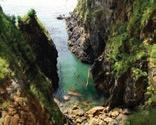

The heartbeat of Cascadia 21 stories & the race|play|experience calendar online.
ANW New Adventures are Waiting. Free Consultation online. SalishSeaHypnosis.com 360-319-7081 info@salishseahypnosis.com Negative Self Talk Holding you Back? It’s Time to Embrace the Life that You Want. For Your Next Adventure, Pick Up Some BAGELS bagelrybellingham.com 360.676.5288 Open Monday-Saturday 7am-3pm Sunday 8am-2pm Online Ordering Available We strive to provide a balance of safety, enjoyment, and adventure. We are passionate and enthusiastic about what we do and where we live. Come on an adventure and let us share our passion with you! 250 726 2035 | hellonature.ca
Mt. Rainier peers over the shoulder of Glacier Peak
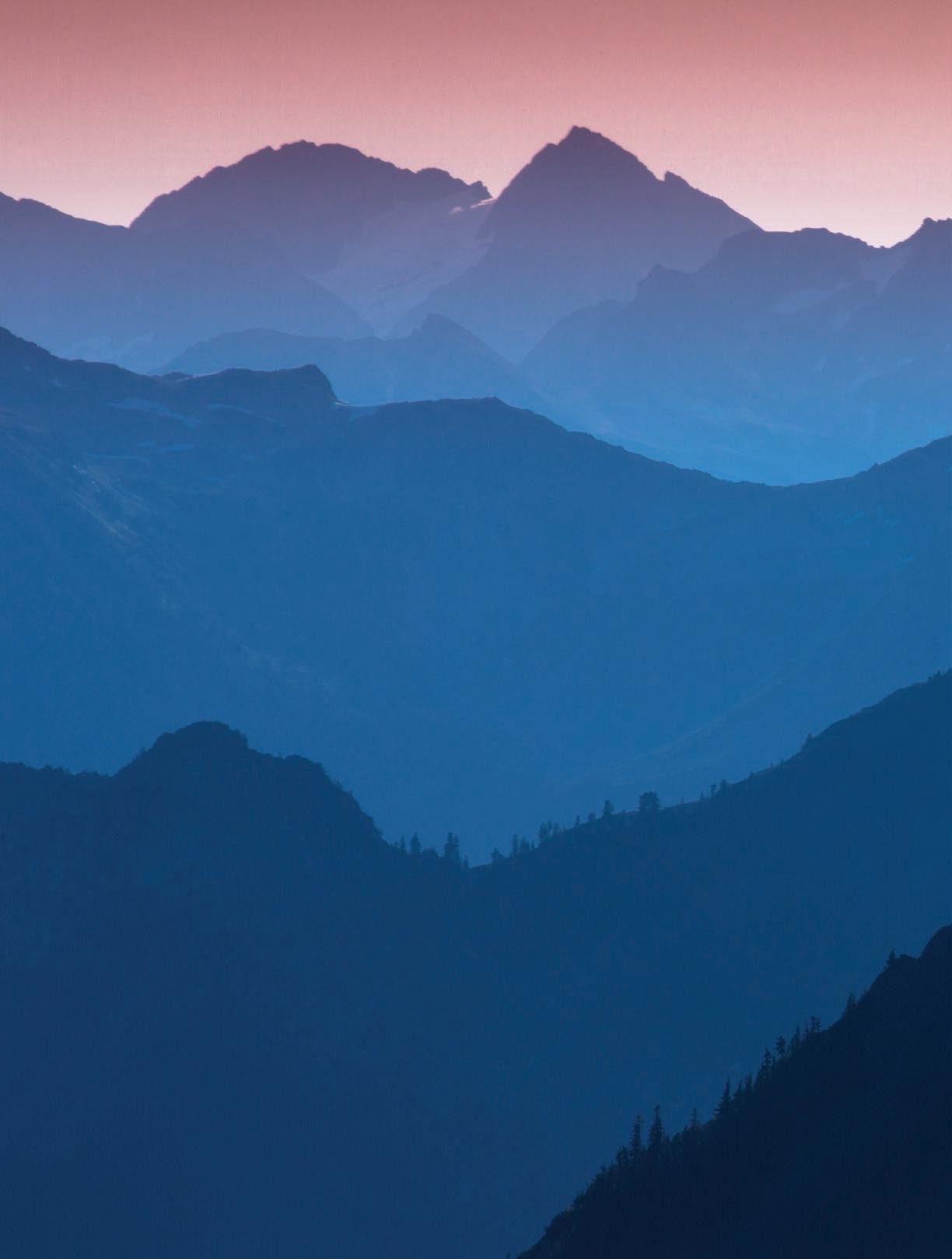
A Mountain Poetry
Pilgrimage
Story by Roger Gilman
Time for Serenity, Anyone?
I like to live in the sound of water in the feel of mountain air. A sharp reminder hits me: this world is still alive; it stretches out there shivering toward its own creation, and I’m part of it. Even my breathing enters into this elaborate give and take, this bowing to sun and moon, day or night, winter, summer, storm, still – this tranquil chaos that seems to be going somewhere. This wilderness with a great peacefulness in it. This motionless turmoil; the everything dance.
This question and recollection comes from William Stafford, the 20th Poet Laureate of the United States. He lived and worked in Portland, Oregon, and spent significant time in the Cascade Mountains of the Pacific Northwest.
For him, a shallow river and the sound of water winding through one of the many deep valleys of the American West is the salient thread connecting everything of value. Many of these rivers have flowed forever through “the basement of time” as the author Norman Maclean wrote in A River Runs Through It. From trickling headwaters in tall mountains to vast wandering deltas, cascading rivers run hard and fast to the mighty North Pacific Ocean. During an after-poetry-reading party at Maclean’s home—a reading sponsored by The Chicago Review (I was poetry editor at the time)—he told me that if rivers were for me as they were for him, the thread that pulled everything together, I should check out the poems of William Stafford. I’d never heard of him.
Because I would never ignore advice from Maclean, who previously convinced me to quit the hobby of bait fishing and learn the art of fly fishing, I read every Stafford poem and found a deeper value for rivers “running through it.”
In 1970, I was one of a small group of Fairhaven College students at Western Washington University who blocked the not-yet paved road through the North Cascade Wilderness, protesting its construction. A highway rivering through the wilderness? Moronic, I thought; even oxymoronic. Decades later, I’ve learned the virtue of this black ribbon highway leading into the wilderness.
In part, the landscape of North Cascades watersheds became more meaningful to me because of the seven poems William Stafford wrote at the end of his life after visiting, one last time, this place of mountains and rivers without end. The poems in his chapbook, The Methow River Poems, (Confluence Press, 1995) are site-specific poems that respond to the high peaks around Washington Pass, the mountain meadows around Mazama, the high desert sage of the Methow Valley, and other inspiring locations.
In recent decades, I have taken the 80-mile pilgrimage east from Sedro-Woolley on WA-20 (The North Cascades Highway) across the mountains to Washington Pass, Mazama, and Winthrop, and then south on WA-153 following the Methow River from Twisp to Pateros, where the river joins the Columbia. On this scenic route, it’s hard to keep your eyes on the road; I find myself stopping often and pulling off the road to gaze at a snowcapped mountain peak or a deep-cut green forest valley or to stop at a bend in the river to cast a long translucent line across the burbling stream—casting deceptive flies to trick the cutthroat trout. Here, Douglas fir trees comb the wind, Ponderosa pines sweeten the air, and aspen and cottonwood leaves wink in the breeze: all the views are breathtaking and, for me, full of meaning.
But the real point of my pilgrimage is to admire the site-
22 The heartbeat of Cascadia >>> Go to to read ANW AdventuresNW.com
specific ceramic plaques displaying Stafford’s poems from The Methow River Poems: “Silver Star,” “A Valley Like This,” “Where We Are,” “From the Wild People,” “Ask Me,” “Is This Feeling Real,” and “Time for Serenity, Anyone?”
The project traces its origins to 1992 when two National Park rangers, Sheela Mclean and Curtis Edwards, wrote to Stafford complaining that after years of creating interpretive road signs in the Cascade and Okanogan National Forests, they had grown tired of their own writing. They proposed a project for poetry in the wild. As Susan Hauser reports in the Wall Street Journal, they told him, “We’re tired of our own mediocre natural history writing. We need someone who can relate feeling as well as facts; poetry is what we need.” Hauser further notes that “the Forest Service offered $100 per poem. Stafford took the pay and wrote the poems in July of 1993 after an inspiring visit to the Methow River Valley. A month later, he died, at

age 79, from a heart attack.”
The porcelain enameled signs displaying the seven poems have stood in place since 1994 in honor of the mountains, valleys, rivers, and deserts that inspired them. They are beautiful poems.

I stop and linger over one of them, From the Wild People, and try to write one back to him.
Kim Stafford, the poet’s son (a Poet Laureate of Oregon) comments in an
afterword to the poems in the chapbook that the Methow River Valley Poems “display my father’s habit of mind,” a humble and generous spirit offering insights into the more than human world and how our wild nature relies on that. Something best learned from adventuring into wild nature and listening carefully.
Many political conflicts needed to be resolved to establish the North Cascades public lands where Stafford’s poems now reside. One resolution of the paradox of a road through the wilderness was an agreement to construct the highway through a national recreational corridor as a fast, wide, flat, and straight roadway to facilitate the extractors—the mining, hunting, logging, and tourist businesses—on either end, outside of the park, and to preserve the otherwise roadless scenic interior for hiking and camping, climbing and canoeing.
Now, as we pass beneath the shining spires and through lush river valleys,

The heartbeat of Cascadia 23 stories & the race|play|experience calendar online.
William Stafford.
Photo courtesy Lewis & Clark College
Stafford’s poems aid our contemplation of the intrinsic, nonutilitarian value of the untrammeled community of the wild and its natural beauty, fractal changes, and the basement of time, rivers, and mountains without end. What we might love
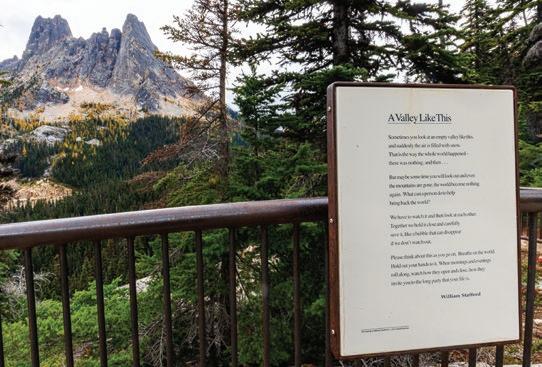
and hope for is a natural grace where the rest of nature tolerates our dangerous existence. And for serenity in a violent and mutilated world.
Stafford might tell you that if you want to explore a wild mountain or valley, an untamed river or unknown trail, you need to go there alone—even if with others—and stop often

Three Poems
A Valley Like This
Sometimes you look at an empty valley like this, and suddenly the air is filled with snow. That is the way the whole world happened –There was nothing, and then. . .
But maybe some time you will look out and even the mountains are gone, the world become nothing again. What can a person do to help bring back the world?
We have to watch it and then look at each other. Together we hold it close and carefully save it, like a bubble that can disappear If we don’t watch out.
Please think about this as you go on. Breathe on the world. Hold out your hands to it. When mornings and evenings roll along, watch how they open and close, how they invite you to the long party that your life is.
Ask Me
Some time when the river is ice ask me mistakes I have made. Ask me whether what I have done is my life. Others have come in their slow way into my thought, and some have tried to help or to hurt: ask me what difference their strongest love or hate has made.
I will listen to what you say. You and I can turn and look at the silent river and wait. We know the current is there, hidden; and there are comings and goings from miles away that hold the stillness exactly before us. What the river says, that is what I say.
Where We Are
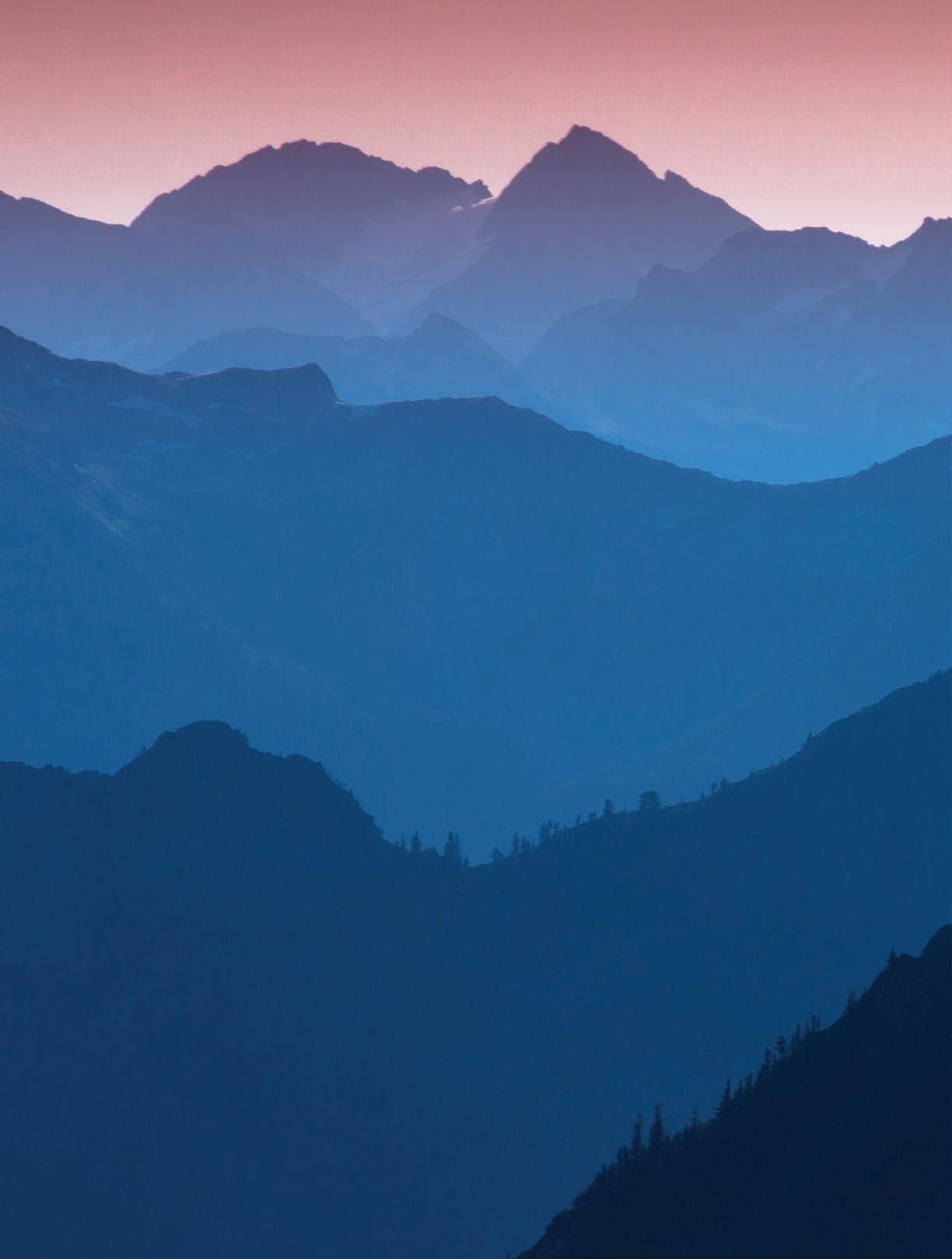

Fog in the morning here will make some of the world far away and the near only a hint. But rain will feel its blind progress along the valley, tapping to convert one boulder at a time into a glistening fact. Daylight will love what came. Whatever fits will be welcome, whatever steps back in the fog will disappear and hardly exist. You hear the river saying a prayer for all that’s gone.
Far over the valley there is an island for everything left; and our own island will drift there too, unless we hold on, unless we tap like this: “Friend, are you there? Will you touch when you pass, like the rain?”
24 The heartbeat of Cascadia >>> Go to to read ANW AdventuresNW.com
– THIS SUMMER –spacious riverfront luxury suites H top-notch hospitality private, screened porches H full gourmet kitchens H riverfront “beach” close to outdoor recreation H steps to dining & entertainment
The “A Valley Like This” plaque at Washington Pass. Photo by John D’Onofrio
along the way to simply gaze at (or better yet) to contemplate the high-view of the deeply woven thread that runs through everything meaningful and valuable and beautiful. To seek out further stories that could be true—about the mornings and evenings, as they open and close along this thread that becomes one’s life.
Only then should we make the turn toward home.
Stafford Methow River Poem Plaque Locations
A Valley Like This: Washington Pass Overlook
Silver Star: Washington Pass
Where We Are: Tawlkes-Foster suspension bridge near Mazama
Ask Me: Behind the Farmer’s Exchange building, Winthrop Is This Feeling About the West Real?: Twisp Park, Twisp
From the Wild People: McFarland Creek parking area
Time for Serenity, Anyone?: Mouth of the Methow River, across from the fruit stand
William Stafford, “Ask Me” from Ask Me: 100 Essential Poems. Copyright © 1977, 2014 by William Stafford and the Estate of William Stafford. Reprinted with the permission of The Permissions Company, LLC on behalf of Graywolf Press, Minneapolis, Minnesota, graywolfpress.org. Published by permission of Kim Stafford. Special thanks to Tim Barnes, the editor of The Friends of William Stafford Foundation newsletter, for information and ideas for this story. Learn more: www.williamstafford.org

Whidbey Island
Beaches, Bird Watching and Kayaking Miles of Walking and Biking Trails

• info@coupevillechamber.com
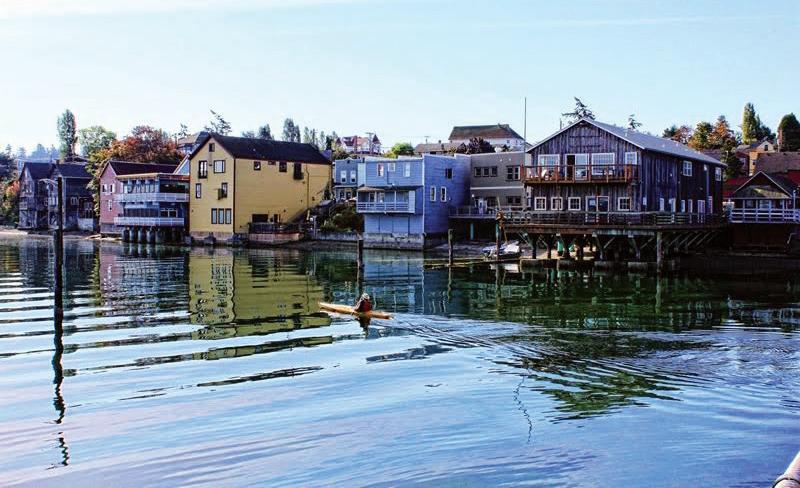





The heartbeat of Cascadia 25 stories & the race|play|experience calendar online.
RENDEZVOUS HUTS RENDEZVOUSHUTS.COM Operating under a special-use permit in the Okanogan-Wenatchee National Forest Methow Valley, Washington @RENDEZVOUSHUTS
Unique
360-678-5434
in Historic For a list of all that is happening, go to: coupevillechamber.com
Coupeville on
Scenic
Seasonal Parades and Festivals
Dinning, Shopping and Lodging Amenities
Adventures
ANW
Rick Lawler
wing it
Elevate your ride. Wing foiling lessons, rentals, and gear to help you get on the water this summer.





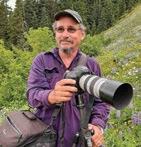




In addition to providing you with all the information you need to navigate the trails, this book focuses on the inspiring beauty to be found on these extraordinary footpaths around Mt. Baker (and the spectacular North Cascades). More than a book to tell you how to get to these spectacular destinations, this book tells you why to go.
Lavishly illustrated with almost 200 beautiful photographs by the author (and Adventures Northwest Publisher/Editor) John D’Onofrio, each hike is presented with an eye toward the exceptional scenic splendor of these carefully-selected destinations.
Pick Up Your Copy of Hiking Mt. Baker & the North Cascades at these local outlets:
26 The heartbeat of Cascadia AdventuresNW.com >>> Go to to read ANW
360 775 2741 / KitePaddleSurf.co m 2620 N. Harbor Loop #18, Bellingha m
hiking guide. This is not your typical John in his element Backcountry
Essentials | Bay to Baker Trading Company | REI - Bellingham Village Books – Bellingham & Lynden | Heather Meadows Visitor Center, Mt Baker
(starting summer) North Cascades National Park & Forest Service HQ, Sedro-Woolley











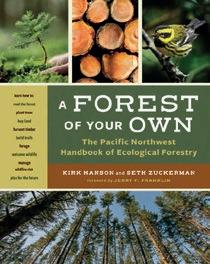
Chickadee Poecileatricapillus ButterflyMourningCloak 8 Orchard MasonBee A A PollinatorDeck_TextSide_Final.indd 1 12/6/23 6:17PM Medicinal Plants of the Pacific Northwest A Visual Guide to Harvesting and Healing with 35 Common Species by Natalie Hammerquist A comprehensive guide for beginners to the most abundant and useful wild plants in the Pacific Northwest Explore the amazing world of some of our most common native pollinators with this deck of playing cards Pollinators of North America Deck of 52 Playing Cards AVAILABLE EVERYWHERE BOOKS ARE SOLD AND ONLINE AT WWW.MOUNTAINEERSBOOKS.ORG Discover the many rewards of forest stewardship with this extensive guide A Forest of Your Own The Pacific Northwest Handbook of Ecological Forestry by Seth Zuckerman and Kirk Hanson stories & the race|play|experience calendar online. The heartbeat of Cascadia 27 JOIN US FOR THE THE BEST SUMMER EVER! Full and half day weekly summer programs are open for registration now! Learn more and register online. WHATCOM FAMILY YMCA SCAN TO LEARN MORE & REGISTER! www.PNWBUSHCRAFT.com Create memories that will last as long as your Gear. Time outdoors is priceless Heirloom-Quality Hand-Crafted Canvas Outdoor Gear Built for the Pacific Northwest
and Much More!
Waxed Canvas Bags,
Travel
Trays,
Groundcloths,
Foraging Pouches
The Magnificent North Cascades
By John D’Onofrio
The North Cascades offer some of North America’s most spectacular mountain scenery, with more peaks that rise 3,000 feet in the last horizontal mile to their summits than any other range on Earth. But these mountains—in addition to their dramatic topography— also offer sublime intimacies: incandescent moss gardens, snow-melt pools reflecting the sky, twisted Krumholtz trees clinging to the fractured rock, and lichen-filigreed alpine boulder fields. Alpine wildflower gardens flourish in the sweeping meadows, tender blossoms swaying in the summer breezes. These delicate details are made all the more beautiful and poignant by the unutterably
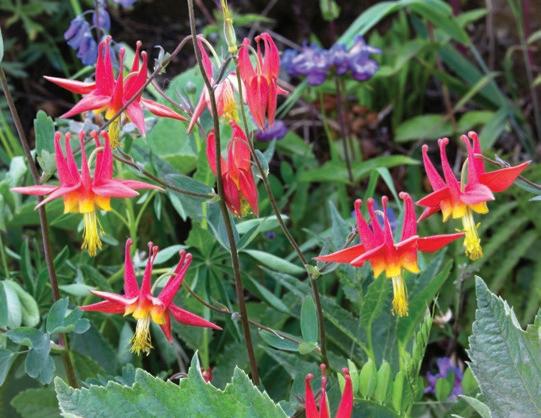

harsh environment in which they are found, at the base of ice-polished towers and pinnacles scoured by the dervish winds. In the high country, the season is short but wildly exuberant. And not to be missed.
John D’Onofrio is the publisher/editor of Adventures Northwest. His new book, Hiking Mt. Baker & the North Cascades (Hancock House) is available at local bookstores and online.


28 The heartbeat of Cascadia
Clockwise from below: Mountain Hellebore, Lake Ann, The Triplets, Mt. Shuksan, Maple Pass, The Picket Range from Sauk Mountain, Wildflowers & the Deming Glacier, Columbines
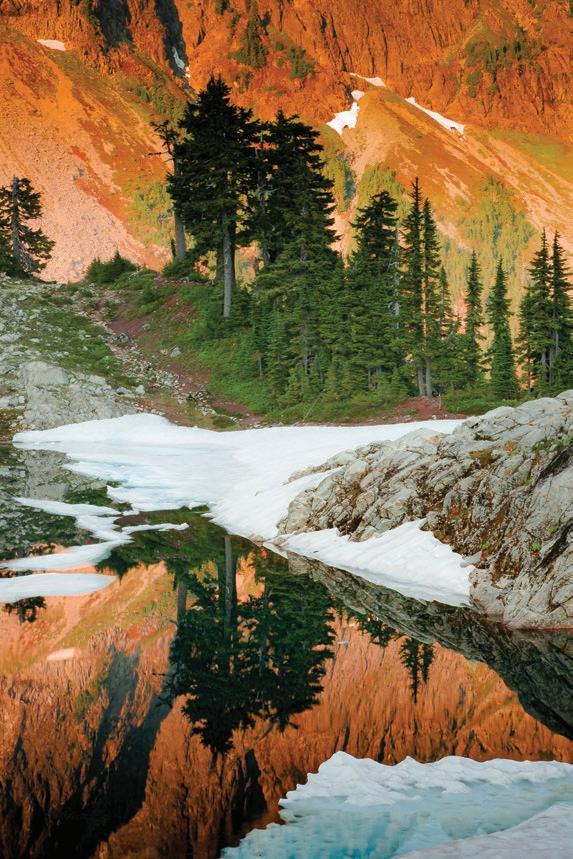




The heartbeat of Cascadia 29


30 The heartbeat of Cascadia >>> Go to to read ANW AdventuresNW.com
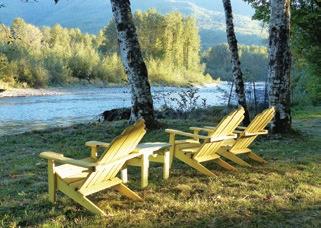
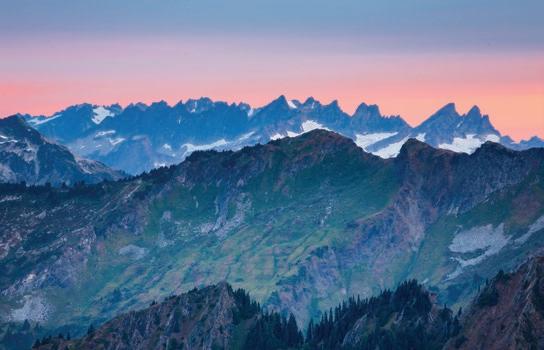


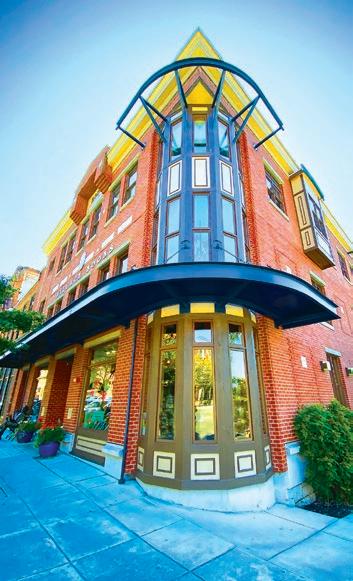

The heartbeat of Cascadia 31 stories & the race|play|experience calendar online. E 1200 11th St. in Historic Fairhaven, Bellingham•360.671.2626 and 430 Front St., Downtown Lynden• 360. 526.2133 Shop 24/7 and Discover Event Information at VILLAGEBOOKS.COM Bellingham & Lynden • Open Daily •New, Used, and Bargain Books •Gifts Galore •Author Events •Local Guides and SO Much More! 20% OFF Storewide SALE Jun. 22-23 Don’t Miss JODI PICOULT September 13 Book Your North Cascades National Park Vacation Now! Enjoy a vacation home and luxury trailer on the wild & scenic Cascade River! World-class fishing, white water kayaking, rafting/floating, hiking, climbing and bird watching. Now Offering Outdoor Equipment Rentals! Cascade River House Relaxation and Tranquility at the Gateway to North Cascades National Park. 360.873.4240 www.cascaderiverhouse.com
Life on the Edge Lessons Learned on The West Coast Trail
Story and Photos by Stephen Grace

Toprepare for the West Coast Trail on Canada’s Vancouver Island, find a ladder, preferably a wobbly one with a few rungs of questionable stability. Load your backpack and put it on. Then, climb up and down the ladder dozens of times while someone sprays you with a hose.
When Amy and I hiked the West Coast Trail (WCT) in July of 2023, Vancouver Island was experiencing a historic drought, so the hose-spraying training regimen was unnecessary. During our seven-day trek, sunny weather was so prevalent that we wondered if stories about hikers slogging through mud for seven consecutive days of downpours were exaggerations if not outright lies.
The one night that we did get some precipitation, we forgot to put the rain fly on our tent before we fell asleep.
Waterdrops splatting against our faces reminded us that we were camped at the coastal edge of one of the world’s great temperate rainforests.
The logistics of a WCT backpacking trip are as daunting as the hike. Reservations for permits should be secured months in advance. Before being issued an actual permit, you must read online preparation material, watch a safety video, and attend an in-person orientation session. One out of every hundred people who attempt the WCT has to be evacuated. Parks Canada is going to great lengths to reduce the number of evacuations. After completing your orientation session at park headquarters, you are issued a permit and given a detailed map of the route and a tide table. You are also given an evacuation form to fill out in the event of a misadventure because you
didn’t study your map and use the tide table to time your travel around shore obstacles. Boxes on the form indicate “contributing factors” to the evacuation. One is labeled “carelessness.” Our goal for the trip, Amy and I decided, was to avoid checking this box.
If you are a hardcore thru-hiker who eats trail miles for breakfast and the fiftymile length of this trail strikes you as laughably easy, here’s a more telling number: seventy. That’s the ladder tally. Some of the ladders are a mere twenty feet tall and tilted at user-friendly angles of around 60 degrees. Other ladders tower fifty feet or more; some seem disturbingly close to vertical.
Consider the ladder system of Culite Creek: seven ladders on one canyon wall and eleven on the other side. Between the ladders runs a cable car you can use to cross the creek. If this sounds like fun in an Indiana Jones or Goonies way, well, it
32 The heartbeat of Cascadia >>> Go to to read ANW AdventuresNW.com

is—for a few seconds. After you release the car containing you, one other hiker, and your packs from a platform, gravity gives you a free ride. But before you can finish yelling whee, friction does its dirty work. The cable car stops, and the rest of the ride is up to you. Start pulling the rope and scold yourself for not doing more upper-body workouts.
Each time you arrive at a cable car crossing, the car could be on the other side of the river—meaning you must first pull the contraption to your platform. Only then can you haul yourself and your gear across. Are these cable cars lightweight and easy to pull? No, thank goodness. While dangling over a gorge, you want a sturdy metal car to carry you. To prepare for the WCT cable car workout, start doing pushups at home and lat pulldowns at the gym as soon as you secure your permit reservation. CrossFit classes and tug-of-war
contests would be helpful for this hike. A rule of physics on the WCT: what goes up one ladder must come down another. A rule of psychology on the WCT: do not stand at the top of a ladder and look down. Do not dwell on your fatigue, your disorientation, and the pack on your
What is the point of following a trail like the WCT into wilderness? If I’m limited to one word: perspective. Give me two words, and I’ll add humility. Allow me a third, and compassion completes the list.
back that throws off your balance as you descend. Do not focus on the fact that the ladder shakes each time you shift your weight. And for goodness sake, have the common sense to collapse your poles and stash them; don’t try to carry them in one hand like I did on the first day while descending what we later learned from a lighthouse keeper was the tallest ladder on the WCT.
Did I say lighthouse keeper? Indeed, I did. There are not one but two lighthouses, and you cross their manicured grounds on this trek that injures many people and sends many more peeling off at the halfway point when a non-emergency escape with a water taxi is possible. You can hand your filled-out evacuation form to a lighthouse keeper, who will arrange for your rescue. The WCT is a jarring jumble of civilization and wilderness.
Would you believe me if I told you there are not only two lighthouses on the WCT, but also a crab shack that serves seafood dinners? The trail requires two ferry crossings; their cost is included in your permit fee. At Nitnaht Narrows, the man who ferries you across in a motorboat also runs a restaurant on the floating dock on the south side of the river. If seafood feasts in the middle of a multiday hike are not your thing, maybe you’d enjoy a burger served on the beach below
Carmanah Lighthouse.
Along with lighthouses and restaurants, other human wonders abound on the WCT. A staggering number of shipwrecks, victims of the notorious “Graveyard of the Pacific,” are noted on maps and trail narratives. Some campsites, such as Michigan Creek, are named for these doomed vessels—a boiler from the wooden steamship Michigan lies crumpled on the shore. The path you travel in your high-tech footwear, a GPS device attached to your ultralight pack, was originally a trade route blazed by Indigenous people. Later, this path through the wilds was used by shipwreck survivors making their way overland; then, it became a telegraph corridor linking lighthouses built to keep ships from shattering on shore. Across the years, evacuation has been a constant of the WCT, from wayward mariners to hapless hikers.
“Anchor on the rocks” is a feature noted twice on your map issued by Parks Canada. As advertised, these locations contain relics from ships. Marooned, giant metal anchors rest on rocks without a trace of the vessels to which they were initially tethered. Coming across an enormous anchor among boulders after hours of wilderness travel is surreal, like an art installation created by the sea.
Steam donkeys might also leave you scratching your head. If you are into derelict steam donkeys, the WCT is definitely for you. Steam donkeys are machines that powered an antiquated form of logging. Their rusting presence along the trail makes sense. Around them are the stumps of fallen titans. The severed remains of old-growth cedars now support hemlock and spruce, young trees straining toward the light, new life rising from old.
The rusted carcass of a motorcycle, one of the iconic features of this trail, makes no sense whatsoever. But there it is: a motorcycle in the middle of a rocky, root-strewn jungle path in the dead center of nowhere. Along with the most
The heartbeat of Cascadia 33 stories & the race|play|experience calendar online.
Climbing the Ladder.
beautiful trailwork I have ever seen.
On the north end of the WCT near Pachena Bay, talented hands have carved salmon shapes and other wonders in footlogs. I regret not spending more time appreciating these features, and I wish I’d met the man responsible for them. Another hiker told me we just missed the artist and his apprentice, to whom he was passing along this tradition.
Some wilderness purists might be bothered by a crab shack and a burger bar, by tended lighthouse lawns and derelict steam donkeys, by a random motorcycle abandoned on the trail. They might be vexed by the sheer amount of infrastructure. The suspension bridges, the ladders with landings, the boardwalks, the balance beams over bogs. Maybe these wilderness purists are even annoyed by the maximalist approach to footlogs—rendering them aesthetically pleasing instead of maintaining a bare-bones minimalism to make the trail passable. Okay, I’ll be honest. I was one of those people. At first. Call me a WCT skeptic. But the trail won me over.
stood for centuries before we decided we needed second homes with wraparound decks. Why not admire the steampunk look of the donkeys’ gears and cogs and marvel at the human ingenuity that made them? Trace with your fingertip the name embossed on the decaying metal: Empire. Consider the stories told along this trail and the stories yet to come in the centuries ahead, as the handful of ancient trees that survived our slaughter continue to add growth rings when the northern
me revel in the friendly chatter of a lighthouse keeper. It helped me celebrate the sight of art carved in logs on a wilderness trail, lounge in a plastic chair after hiking through rainforest, and embrace the idea of a man operating a crab shack in the wilds to feed his family. For a brief but blazing instant, my expansive mood extended to the derelict donkey I touched, a remnant of a fading empire. A machine that we devised to kill some of the largest living things in the history of the planet.

hemisphere of this planet tilts toward the sun in its annual orbit, and whales glide through the blue and boundless sea.
The quirkiness of features you won’t find on other backpacking trips in, say, Olympic National Forest or Redwood National Park is at the heart of the WCT’s charm. The Pachena Lighthouse keeper will talk your ear off if you let him, but why not let him? You’ll have plenty of long stretches of hiking without another human soul within earshot. Parks Canada has placed two enormous Adirondack chairs made of plastic (recycled, thankfully) on a wild bluff. Why not sit in these bright-red thrones above the sea? And why not get to know the derelict donkeys? They have already done their dubious work, slaying trees that
To silence my inner curmudgeon who craves a pristine wilderness experience, I reminded myself that none of us will be here—not humans on trails, not trees, not whales—when the sun swells and turns the Earth to ash, as it inevitably will before it dies. Scientists who study the lifespan of stars know this is true, and the rest of us know it, too. Such are the rules of this universe in which we find ourselves. A universe in which nothing lasts, not even the nuclear explosions that bathe our world in light.
This thought stopped my sniping, at least for a few moments, as I stared at a broken machine, a victim of entropy rusting among the stumps. I absorbed the brutal truth that all of this is so precarious. So brief. This realization helped
My love encompassed the broken ships strewn along the shore, some built to murder whales. All of us are doomed, and all of us are beautiful. I surrendered to my love for this world, gorgeous and hideous, noble and base.
Call it trail fatigue. Dehydration. Exhaustion. I’d like to think that the moving meditation of hiking day after day on a difficult route led me to a place of understanding and acceptance. If only for a moment, the WCT loosened the grip of my misanthropy, which seems to strengthen its hold on my psyche each time I check the news.
What is the point of following a trail like the WCT into wilderness? If I’m limited to one word: perspective. Give me two words, and I’ll add humility. Allow me a third, and compassion completes the list.
We are all so vulnerable out there on a trail like the WCT. It makes sense to be kind to each other, to share information about the hazards ahead, to not hoard what we have, to offer assistance. We may be strong now, but a moment’s inattention, one misstep, a single slip, and we are the ones in need.
There is no trail more challenging
34 The heartbeat of Cascadia >>> Go to to read ANW AdventuresNW.com
Shoreline near the Michigan Creek Campsite.
than the path we navigate through life, a truth that all of us, myself included, tend to forget or choose to ignore soon after leaving the wilds.
Back to practical tips: another rule of WCT ladders is never assume a rung will be there to hold you. Amy learned this lesson one misty morning when she was the first to descend a ladder in the fog, which like all other ladders on the WCT, had been built of rot-resistant cedar. Many of the WCT ladder rungs are polished smooth from boots. Old rungs show low places where countless soles have stepped, eroding the wood—rungs with stories. The stories pile on through the years until one rung can take no more. It wobbles loose and tumbles into the void.
Long arms and legs are useful for stretching past a missing rung. Life’s lottery awarded me lanky limbs capable of spanning the ladder gap we encountered without much trouble, but I worried about my fellow hikers with differently proportioned appendages. While stretching my leg to put weight on the rung below the missing one, this stressed rung moved. I made the mistake of glancing at the ground twenty feet below. Deep breathing restored my mental equilibrium. Methodically, I made my way down, testing the stability of each rung before committing to it, similar to assessing sketchy handholds and footholds while mountain climbing.
You can prepare for WCT ladders by putting on a pack and climbing a ladder at home, and you can get comfortable with heights before you embark on the trail, but I don’t know what kind of training regimen would prepare you for the broken boardwalks—another specialty of the WCT. Bogs, of which there are many, lie interspersed among the forest stands. Bogs are botanically fascinating with their nutrient-poor, acidic soils that host plants adapted to these extreme conditions. If you are into sphagnum moss, as I have been ever since reading Robin Wall Kimmerer’s book Gathering Moss, bogs are beautiful. But they pose a significant hiking challenge.
Boardwalks provide a stable surface for striding over mud that can rise above your gaiters, reach your knees, and even envelope your thighs. This malicious substance tries to suck loosely laced boots from your feet. I have heard stories of hip-

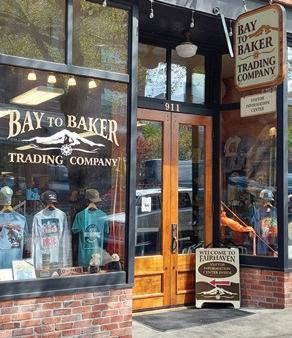


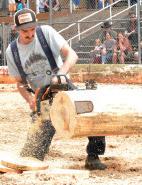


The heartbeat of Cascadia 35 stories & the race|play|experience calendar online. Adults: $10 • Seniors & Kids 6 & Up: $5 Kids Age 5 & Under: FREE 31 Events, Professional Acts and Exhibitions Start at 11am! www.demingloggingshow.com Free day parking! Self-contained Camping Available with Reservations 2024 President Bob
2024 Bull of the Woods Randy Graham Located just 12 miles East of Bellingham, off the Mt. Baker Highway, on Cedarville Road. World Champion Speed Climbing Loggers Breakfast at 6:00am Salmon, Beef & Chicken BBQ Presented by The 61st June 8 & 9, 2024 911 Harris Ave. Bellingham, WA (in the heart of Old Fairhaven) 360.756.6078 Love Local? So do We! Bay to Baker Trading Company has northwest themed souvenirs and gifts, clothing, hats, travel accessories, and cards PLUS outdoor recreational sports accessories, maps, and books for local hiking. Home to the Fairhaven Visitor Information Center
Larsen
deep mud on the trail holding people in place. After straying from boardwalks and poking around a few bogs that seemed bottomless, I am inclined to believe these horrific tales. Stephen King’s stories are less disturbing.
Boardwalks offer salvation. Sometimes. In theory, a boardwalk is a blessing. In practice, falling trees, soggy soil, shifting drainage patterns, and winter storms contort and crack the boardwalks into broken messes that create navigation problems—and strange optical effects.
A fresh boardwalk may have recently been reconstructed—enjoy it while it lasts. A stretch of new boards often ends abruptly at a sunken section of old wood, startling your brain into thinking you may tumble off an edge ahead as if plummeting over a cliff. Or, even more arresting, a section of boardwalk may become so twisted that it resembles the wonky path of an amusement park ride. You keep adjusting your position as the boardwalk curves from horizontal to vertical—until you are walking on the rail of what seems like a banked roller coaster track. At this point, you may opt to step off this lunatic infrastructure and take your chances in the mud.
the base of the rock outcrop or climb ledges toward its top? Each choice leads to another choice, and the fractal branching of the countless decisions you make on your hike will be your destiny.
Perhaps you are wondering if the broken wood of the boardwalks bristle with nails and if these nails pose a danger.
ance and taking strain off your knees. A useful WCT technique is “mud poking.” A man who hiked the trail in a multiday rainstorm a few years ago explained to me that you probe muck between boardwalk sections with a pole tip to find a sunken log or other solid surface before committing your boot to what looks like a pit of tar.

The most basic rule of boardwalk navigation on the WCT: never trust just one board and risk breaking it with your weight—always place your foot on two boards at a time. If Parks Canada explained this in their preparation material, I missed it. I learned this lesson from the sound of cracking wood.
The foundational rule of all WCT rules? Every step is critical. Pay attention.
You always have choices on the trail, as in a video game. Left or right around the log? Over? Or under? Do you traverse
Yes, and yes. Should you make sure you’re current on tetanus shots? You bet. Have people hiked the WCT barefoot? I’d be willing to wager they have, but would strongly caution against joining their ranks. Parks Canada requires sturdy hiking boots. My trail running shoes worked fine during the drought, but waterproof boots with knee-high gaiters would be sensible footwear in more normal, muddier times. Wearing anything less would, frankly, be a bit loopy.
Trekking poles are essential tools on this trail, not only for aiding with bal

Amy tracked her steps. Over the course of seven days, the clever device on her wrist recorded 180,093 steps—almost every one of those required fierce concentration. If you enjoy letting your mind wander while hiking on cruiser trails, the WCT is not for you. If, however, you are like me and find that focusing intensely on your surroundings as you move through complicated terrain is a form of meditation that shuts down the inane chatter in your brain, the WCT will be your bliss.

36 The heartbeat of Cascadia >>> Go to to read ANW AdventuresNW.com
Voted Best Mediation Service in Bellingham! Local, Farm-to-Table. 4073 Hannegan Rd, Bellingham | HollysMeatPies.com
Typical Stretch of Rainforest Trail.
Some sections of the WCT take you away from root-riddled rainforest trekking, removing the need for bog slogging and broken boardwalk stepping. These paths send you along the shore, a mixed blessing.
Past the Cheewhat River, we exited the forest and found a flat surface of firm sand that made for an easy beach walk for maybe one kilometer or one “klick,” as the cool kids on the WCT say. But other than that stretch, shorewalking proved pretty brutal.
You hear a lot of talk about “shelves” on the WCT. At low tide, level expanses of sandstone offer relatively easy walking—until they don’t. Just as you start thinking, “Hey, this is no harder than strolling across the parking lot at Safeway,” you step on a seaweed-covered rock and become a victim of a cartoon slip-on-a-banana-peel fall. You get up; make sure no bones are broken, look around and hope no one captured the moment for YouTube, and then onward you walk across the shelf. Until a surge channel stops you in your tracks.
You also hear a lot of talk about “surge channels” on the WCT. These gaps in shelves carved by the surging


ocean can provide minor navigation nuisances. They can also kill you. Some of the surge channels are so dangerous that if you fall into a chasm you are trying to leap across or you slide into one from its slippery edge, and the rising tide is pushing a powerful current through the channel, your chances of getting out alive are very close to zero. Surge channels are often hidden from view as you gaze across the flat plain of a shelf. What do you do? You try to remember what the instructor in the orientation session said about where the infamous surge channels lurk, and you decipher the symbols on your map. And when you must grapple with one of
these dangerous gaps, you go high on the shore, climbing above the head of the channel, except when you absolutely should not do that.
There is one surge channel where you are told to never, under any circumstances, climb the steep headwall above the channel—hikers who slide down this slope into surging water have slim hope of surviving. How do you get across this one? Wait for low tide.
Shore walking, often billed as an easier alternative to jungle hiking and ladder climbing, presents yet another challenge. This shore problem, though not dangerous like slippery rocks and surge channels, is a source of psychologi-

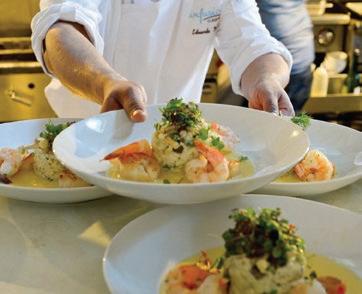


The heartbeat of Cascadia 37 stories & the race|play|experience calendar online. Infusion Cuisine features delicious Mexican, Italian, and Asian cuisine in a family-style atmosphere. Located at the intersection of Hannegan and Pole Rds, Infusion offers one of Whatcom County’s most unique dining experiences. Open Tues-Sat 4-8 6912 Hannegan Rd, Lynden, WA 360-778-1726 infusioncuisine.com Life is a Journey. Yoga Lights the Way. Offering classes at Bellingham Yoga Collective, Lynden Yoga Collective and online in the comfort of your home. Yoga with Susan D’Onofrio Patience, Compassion, Tolerance www.8petalsyoga.com 360-319-1601
cal suffering. Soft sand.
Loose piles of sediment reduced our speed to a maddeningly slow trudge—a purgatory of incremental forward progress before we reached the promised land of the next campsite, marked by buoys hanging from trees—helpful beacons if you arrive early in the day. If you roll into camp during the late afternoon or evening hours, you can’t miss the tents, sometimes counted in the dozens.
and beat the morning rush hour.
Second, if you crave a private camp and are willing to devote some physical and mental work to the project, it is achievable. Our most idyllic experience came at Thrasher Cove, the busiest of all camps. We got there early, crossed a
always room to pitch another tent. And there are always encouraging words for bedraggled travelers who stumble in at dusk seeking vacant real estate.
Chatting with good-natured campers from around the globe on the WCT became a highlight of the experience for me—a surprise for my solitude-seeking self.

If solitude is your goal on a wilderness trip, remove the WCT from the top of your hiking list. The crowding at campsites—especially popular ones like Tsusiat Falls—approaches urban density. Add to the list of WCT challenges: not tripping over tent guylines as you make your way to the privy.
But the crowding warning comes with three caveats. First, hiking between campsites feels delightfully isolated—you can go for hours without seeing another person, especially if you break camp early
couple of logs to get to the extreme south end of the cove, and found the tent site of our dreams: a square of pale sand just above the reach of the highest tide, tucked among giant drift logs. The sound of surf shushed human voices in the distance, allowing us to drown in delicious solitude.
Third, and most importantly, although the popular campsites can feel crowded, people are friendly. No one is ever turned away from a site—there is
An Australian guy who looked like he’d be comfortable on a rugby pitch said of an exceptionally tall ladder, “It’s a gooder.” This quip became standard trail lingo for Amy and me— we called every big ladder we encountered “a gooder.”
As terrific as that was, my favorite quip of the trip goes to an American woman traveling light, solo, and fast. One morning, she blasted past Amy and me as we were botanizing on a boardwalk, our nerdy selves crouching down to look at carnivorous sundew plants eating flies. Later that day, we saw this woman sunbathing on a shore. While we trudged into camp, she gave off the vibe of someone who had been there a
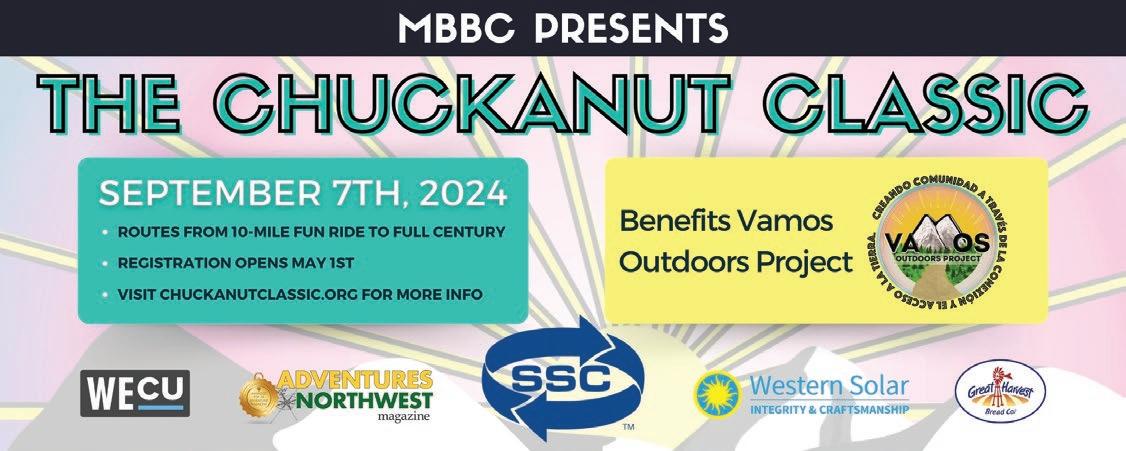
38 The heartbeat of Cascadia >>> Go to to read ANW AdventuresNW.com
Sea Cave at Owen Point.
long time, luxuriating in the soft sand, savoring the sight of the blue sea beneath the blue sky after her badass self knocked off a whole bunch of trail clicks in one fast push between camps. She called the WCT “a beach vacation with an obstacle course each day.”
Trail names are usually reserved for long-distance journeys like the Appalachian Trail and Pacific Crest Trail. However, given the challenges of the WCT, Amy and I decided that trail names were in order.
Amy was NNC, short for Nonnegotiable Coffee. Though she is a compassionate medical professional who has devoted her life to healing people, I am quite certain that Amy would murder me with her bare hands if denied a cup of morning java.
And me: Fossil. I like looking for fossils, but I also feel old. At least compared to the twenty-something dudes

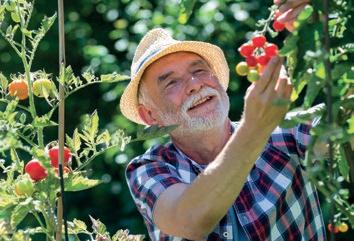

who hiked the trail in five days with packs that weighed fifty pounds or more. When asked if there was anything they wished they had brought with them, they answered without hesitation and in unison: “Beer. More beer.”
One of the Beer Bros had attached to his pack a rope of a diameter thicker than needed to hang food from a tree out of reach of bears. But this rope was neither strong enough nor long enough for rappelling down cliffs. Maybe it’s the kind of thing you carry when you’re proud of how much you can bench press and you’re heading off into the wilds. When I talked with these guys, I was irritated that they displayed all of the bravado I’d had at that age but lacked the annoying arrogance I’d also had back then—god help me if I have to go back knowing what I know now and hike with my insufferable twenty-something self. But boy, would I like to have the speed and stamina I’d had back then.
“Ah, to be young and fast.” That’s
what I said to the three women who raced past me on the trail one foggy morning in the woods. “I’m fifty-five and fast,” said one of them, presumably the mother of at least one of the girls working hard to keep pace with her. “Supermom” became her trail name, but I never saw her again. How could I? She seemed to be setting some kind of speed record on the trail. Standard ego-soothing ensued. I told myself I was moving at a relaxed pace to savor the experience. Which, to be fair, was partly true. While stopping at the ocean’s edge to watch and listen for whales instead of sprinting ahead, I saw a fossil shell embedded in a slab of sandstone from some long-ago sea, washed up on the shores of time for a slow middleaged man like me to see.
In my twenties, I would snowboard 30,000 vertical feet at Jackson Hole, Wyoming, then wake up the next morning and do it again. In my thirties, I trained for climbing Aconcagua in Argentina and trail running in Tibet by
EVERYONE’S PATH IS DIFFERENT. WHERE DO YOU WANT TO GO?
The heartbeat of Cascadia 39 stories & the race|play|experience calendar online.
IRA
•
& 401(k) Rollovers
Endowment Funds • Trusts Values Aligned Investing • Financial and Retirement Planning Disciplined Independent Portfolio Management
running to the top of 14,000-foot peaks in Colorado. In my forties, I rediscovered the thrill of mountain biking and gobbled up miles of singletrack. I could tell you about outdoor adventure goals achieved in decades past, but I couldn’t tell you what kind of rocks I traveled across. I couldn’t tell you about the plants I blazed by or the birds I was too busy to hear. Slowing down has its advantages.
Never again will I match the pace of Supermom or the Beer Bros. By the time I completed the WCT, I was at peace with this. I told myself that stopping to listen to a Pacific Wren sing is better than bragging rights. And most of the time, I believed it.
air they exhale. Following the tracks of sea wolves as the rising sun illuminates a beach. Smelling wet fur when you enter a cove where the wolves walked moments before you. Listening to the musical calls of crossbills feeding on western hemlock
in its childlike nature.

There are many reasons to love the WCT. Smelling ocean air in the rainforest. Hearing the thrum of surf as you cross a trickling creek. Lying on a bed of sand with your back propped against a log as clouds drift above the waves. Watching whales feed so close to shore that the air you breathe in is the


and Sitka spruce cone crops. Stretching your neck to see these trees spire into the rainforest canopy. Losing track of time as you peer into a tidepool to watch hermit crabs fight over shells in a housing market more cutthroat than Seattle’s. Sensing the manic pulse of a hummingbird’s wings as the tiny creature zooms through a sea cave with ferns hanging from the roof. Natural wonders proliferate on the WCT, but the real appeal of this trail lies

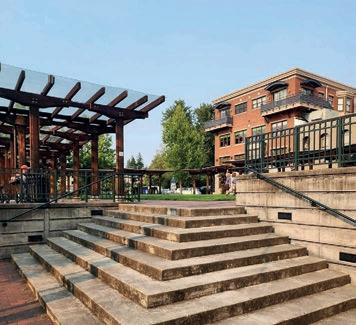
On the final day of our trek, I learned—or rather relearned—that putting tree pitch on my hands improved my grip when climbing slippery ladder rungs. I discovered this as a kid climbing fences in my Missouri neighborhood because I needed to know what lived in the wilds beyond my yard. Amy told me about climbing cottonwoods at her grandparents’ dairy in Wyoming. Suddenly, it all made sense. The expense of the trip. The logistical complications. The tedious planning. Putting up with the pain of creaky knees and an aging back. I understood why we had taken this journey.
My mind, exhausted from the endless focus that the trail demands but liberated from the mundane concerns of modern existence, looped back to children I had seen scaling drift logs at Pacheedaht Beach before we set foot on the trail.
The day before we began hiking, we car-camped at Pacheedaht. This campground, and the entire WCT, is on land
40 The heartbeat of Cascadia >>> Go to to read ANW AdventuresNW.com in the State! Kiddies and Grand parades, chainsaw carving competition, beard contest, pie eating contest, carnival, fireworks, street dance, arts & crafts and food vendors! sedrowoolleyloggerodeo@frontier.com H 360-770-8452 WWW.LOGGERODEO.ORG IN SEDRO-WOOLLEY Photo by Andy Porter Oldest 4th of July Celebration July 3rd - July 6th The EnjoyFairhaven.com May 26: Fairhaven Festival July 6: Chicken Festival Every Saturday, July 6 – Aug 24: Summer Outdoor Movie Series
HUNTER FRANCIS HANDYMAN SERVICES & MORE Interior & Exterior Projects Serving Whatcom County with Quality, Dependable Workmanship 509-899-0572 Hunterthehandyman@outlook.com HUNTERSHANDYMANSERVICES H @thehandymanhunter
Camper Bay.
where people of First Nations have lived from time immemorial. Parks Canada emphasizes this fact and educates trail users about Indigenous history and culture. But actually meeting one of the owners of the land you are about to enter is a more potent experience than written words can convey.
Pacheedaht means “People of the Seafoam,” a woman who checked us into a campsite explained. I may have read that fact and then forgotten it. Now, I will never forget. The very least we can do when someone welcomes us into their home is remember their name.
Regarding the car camping, before we began our hike, I could have done without the dueling music of campground patrons, which, predictably, increased in volume in direct proportion to the amount of alcohol they consumed. Watching campers foul the beach with cigarette butts, beer cans, and plastic trash did little to improve my estimation of humanity. The roar of a leaf blower
blotted out the song of a Swainson’s Thrush. Some campsite users sat inside RVs staring at screens, while others lounged outside in an inflatable hot tub. Many selfies were taken. The shouting that penetrated my foam earplugs, waking me at some absurd hour, reminded me why car camping can seem like the seventh circle. But one night of car camping hell was worth it for a glimpse of something glorious: kids free-ranging their way along the shore.
While Amy and I sat in the sand after eating dinner at camp, we aimed our binoculars at an Osprey kiting in the wind over the sea, searching for fish in the water below. A boy and a girl ran across a log, navigating its narrow girth like a balance beam. Their antics drew my attention away from bird behavior. What were these little humans doing? What little humans do when left to their own devices. They were going on adventures. I consider myself a connoisseur of drift logs, and Pacheedaht has some

of the finest I’ve come across in the Pacific Northwest. The boy made excellent use of one mighty stump, its roots smoothed and bleached by sun and sea. He surmounted this challenge with deft footwork that he may have learned in a climbing gym. Or maybe his balance and agility came to him naturally, a genetic legacy of our ape ancestors who dwelled in trees before descending to the African savannah. The girl shouted that her loose water shoes were bad for climbing. After issuing this disclaimer, she scampered up the stump, reaching its summit as quickly as the boy had. Standing together, they took in the view from the top, closer to the Osprey’s world now than before they had climbed above the beach.
The Osprey, holding its position in the wind with subtle wing adjustments, looked like it was having fun. But this bird was hunting, carrying fish back to its nest to nourish the next generation. Does a bird feel a sense of freedom in skillful acts of physicality? A sense of accomplish-
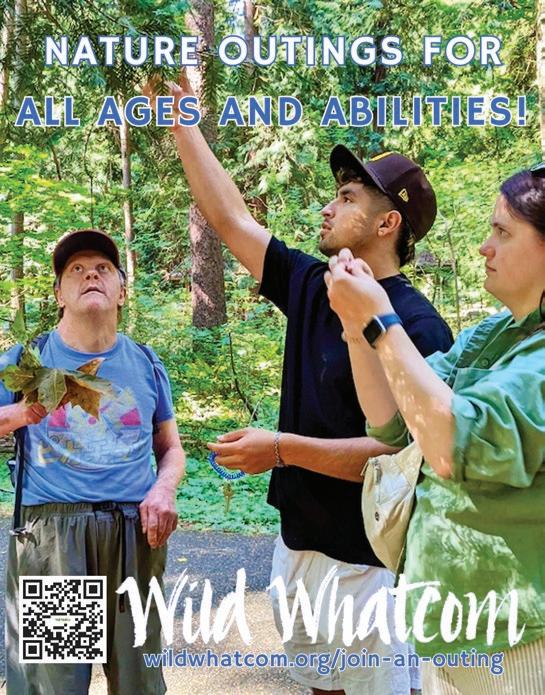
The heartbeat of Cascadia 41 stories & the race|play|experience calendar online.
ment at goals achieved? Does a raptor experience rapture at the conclusion of a struggle with prey? Maybe. And perhaps play is more serious than we suppose. Imagination and creativity play prominent roles in outdoor adventure. Projecting an image of yourself standing on a summit stokes your motivation. Generating scenarios that could be encountered on a trail helps you plan how to work through potential challenges. Often, finding a route through the wilderness requires experimenting with different strategies to solve the puzzle of how to get to your goal.
No one told the children at the campsite that they needed to climb a gigantic stump. This learning experience was entirely their own. When the boy and girl climbed down, they joined a roving band of adventurers. One child lifted a stick like a sword and said, “My king says you shall not pass.”
Not only were parents not present for this adventure along the shore. The
children had no phones. No screens. Only their bodies and imaginations, and a wildland at the edge of the sea.
Maybe their parents were wise. Maybe they understood that children need to explore the world on their own. Or maybe they were preoccupied with drinking cocktails in the inflatable hot tub or watching screens inside RVs. Regardless, those kids inspired me.
Although I had cell service for much of our trek, I left my phone in airplane mode to save my battery and my sanity. Day after joyous, demanding day, I climbed roots and ladders, crawled into the Hobbit homes of hollow trees, explored sea caves, and imagined swinging across mud pits. I stood beneath a thundering waterfall. I swam in creeks and coves. I trekked across sandstone slabs like desert scapes washed by waves. When I saw outcroppings of metamorphic rock warped by heat and pressure beneath the earth before being lifted skyward by some ancient cataclysm, I
climbed these formations to better see whales. Or I climbed them for no reason at all. Just because these obstacles were there, the child I had been and the child I aspire to be, told me I should.
Regarding the low bar that Amy and I set for ourselves at the beginning of our hike—not checking the “carelessness” box on our evacuation form—I can report that we cleared it. Just barely.
In a dark forest one morning, while lifting my leg over a log, I misjudged the distance required to clear a poky knob of wood. Hand sanitizer sterilized the wound, and I lost more pride than blood for this blunder. No evacuation necessary. Amy’s mistake was following me when I chose the low road through a notorious jumble of boulders that range in size from bowling balls to compact cars, blocking Thrasher Cove. What we learned: When presented with the choice of a high and difficult—but

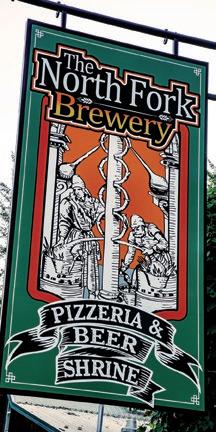
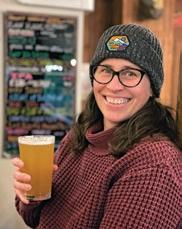

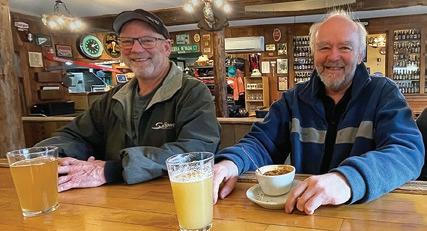
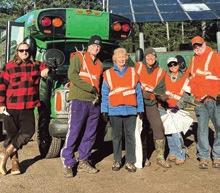

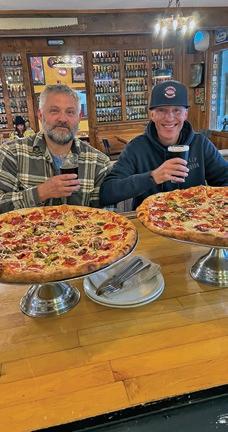
42 The heartbeat of Cascadia >>> Go to to read ANW AdventuresNW.com
Freshly-Brewed Small-Batch Ales, Lagers, and Barrel-Aged Sours Delicious Hand-Tossed Pizzas & Salads • One-of-a-Kind Beer Shrine 6186 Mt. Baker Highway, Deming • 599-BEER(2337) • northforkbrewery.com Follow us on Facebook & Instagram! OPEN EVERYDAY 12-9:00 PM • HAPPY HOUR – MON-FRI UNTIL 5 PM The North Fork Brewery & Pizzeria
dry—path through the boulder field versus a low and easy—but wet—route, choose high and dry every time. I went low and learned the hard way. Solid ice seems less slippery than wave-polished boulders glossed with green algae. Rocks not slick with seaweed bristled with barnacles. The ocean’s edge had developed a one-two punch to deter human travelers: a slip on a seaweed-slick boulder produced barnacle-lacerated flesh.
We took a break amid the chaos of rocks so Amy could clean her barnacle cuts and glue her skin back together. Pro tip: always bring a medical professional with you on a hike. Even better, marry one. After my wife expertly repaired herself, we slowly made our way across boulders to Thrasher Cove. Our evacuation form remained blank.
What’s truly astonishing is that of the 180,093 or so steps we took in challenging terrain, demanding our full participation and attention, with each footstep presenting the possibility of filling out an evacuation form, almost
The art of nature eARTh
Island Magic
by James Hardman
Inspired by daily walks on Orcas Island and journeys to outer islands, James Hardman’s paintings portray the San Juans at their most tranquil and pristine. His signature style incorporates elements of woodblock, pointillism, mosaic, and traditional glazing techniques. Hardman’s work can be found at Chuckanut Bay Gallery in Bellingham, Two Moons in La Conner, Crow Valley Gallery in Eastsound, the James Hardman Gallery in Olga, and online at JamesHardman.com.
every one of those steps was without incident. This does not seem possible. Yet 99 out of 100 people who hike the WCT do not need to be evacuated. Nature built us for survival—we are capable of more than we think we are.
Our ancestors in Africa, who gave rise to our entire human family, from the People of the Seafoam to my Celtic and Ashkenazi forebearers, had no option for filling out an evacuation form when they trekked through the wilds. They followed their curiosity to know what was in the next valley, on a distant summit, along a far shore. Their imaginations led them on quests for shelter and food. And when their material needs were met, they explored the wildlands of their imaginations, trying to figure out what it means to exist as a human being on this Earth, a project that continues to this day, with no end in sight.
Like the boy and girl on the seashore who knew they needed to climb a drift log, two adults straddling both sides of a divide—one of us (Fossil) on the north side of fifty, and the other



(Non-negotiable Coffee) a bit south of this landmark—decided they had to hike the West Coast Trail. We knew, without being able to explain why, that we needed to explore a wild edge where the rainforest collides with the sea.
Time has stolen some physical strength and mental agility from us. But there is no reason that our imaginations cannot be as rich now as they once were when we climbed the trees and fences of our youth. Children are the best teachers, wild places, the best classrooms. And the WCT is one of the finest educational institutions on this planet.
The fact that the people of the First Nations allow those of us who weren’t born on their land to walk the trail and absorb its lessons, relearning what our ancestors learned long ago when they began the adventure of climbing down from the trees onto the plains of Africa to become human—this is a gift to us all, our human family, young and old.
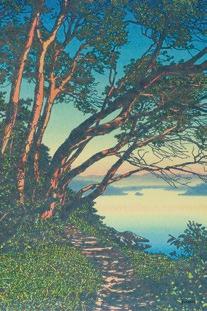



The heartbeat of Cascadia 43 stories & the race|play|experience calendar online.
ANW
Clockwise from Top Left: Cantabile, Evensong, Moonlight, Full Moon at Madrona Point, Morning Ridge Trail, Evening on Turtleback, Chanson
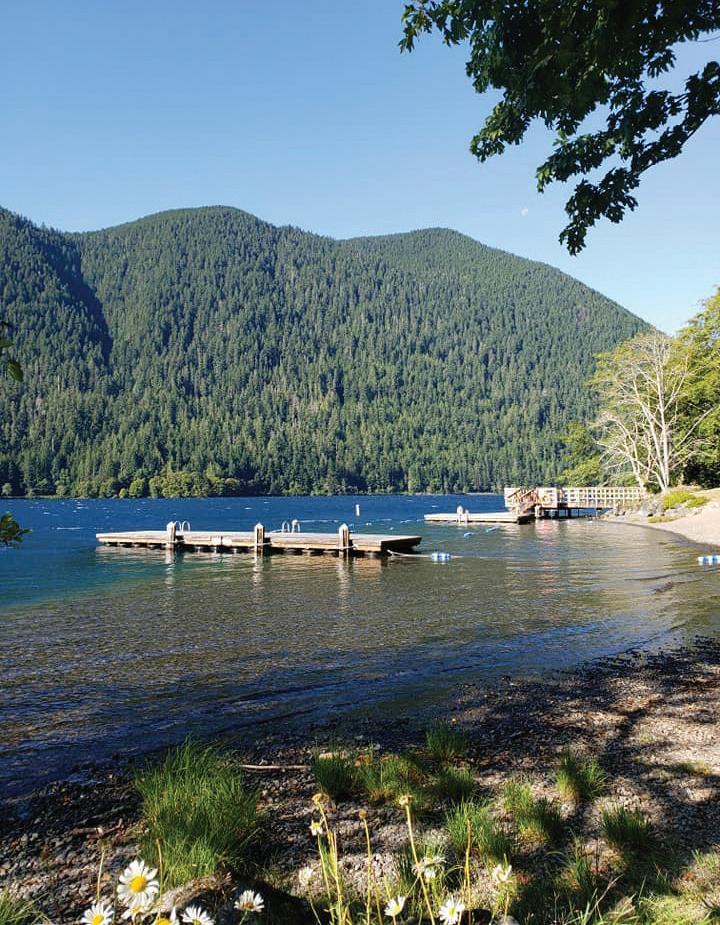
A hidden gem that is Post Falls, Idaho... majestic trails winding through lush forests, local dining spots that can satisfy any hunger, and parks so secluded, even Bigfoot would need a map to find them. And don’t even get us started on the serene beaches... Pack your bags, grab your sense of wonder, and get ready to undiscover Idaho.
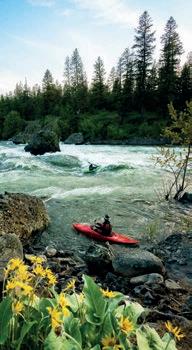
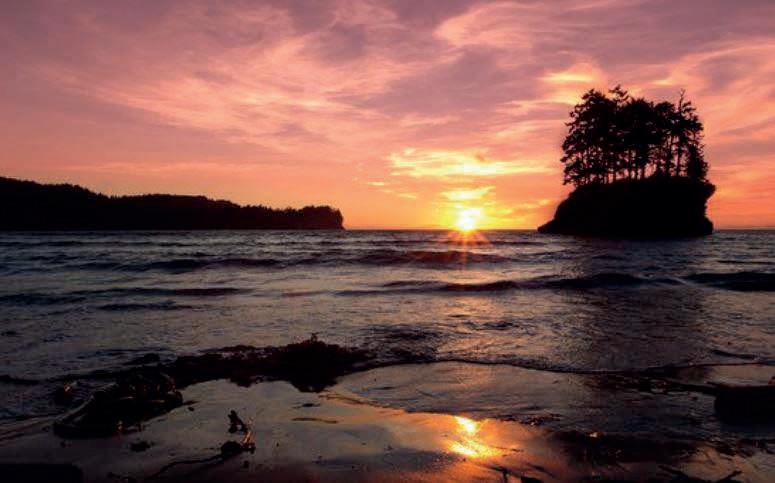

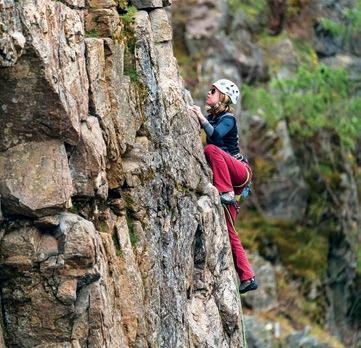

visitpostfalls.org




44 The heartbeat of Cascadia >>> Go to to read ANW AdventuresNW.com Sports Specialized care for active lifestyles. Primary Care | Urgent Care | Sports Medicine | familycarenetwork.com Alex Wertheimer, DO Bilal Ittiq, MD Medicine ACCEPTING NEW PATIENTS WITH REFERRAL Chronic Conditions • Acute Injuries • Concussion Evaluation Injections • Ultrasound • Aspiration Camping Encouraged! CAMP DAVID Jr. On the shores of Lake Crescent
Undiscover this Idaho gem.




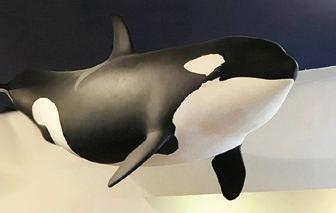





The heartbeat of Cascadia 45 stories & the race|play|experience calendar online. Make The Whale Museum part of Learn more at whalemuseum.org Open daily and within walking distance from the mainland! • 62 First St. N., Friday Harbor, WA 98250 • 360-378-4710 ext. 30 PromotingstewardshipofwhalesandtheSalishSeaecosystemthrougheducation&research Happy Hour Every Day 4-6 with $3 Beers! Margaritas Only $5 Saturdays 11-8 Made-from-scratch sauces, tamales, tortillas, & salsas. 117 W Magnolia St, Bellingham • Open Tuesday – Saturday 11am – 8 pm “Oh my, the BEST Mexican cuisine in Whatcom and possibly Skagit County, too!” - Google Review Serving Bellingham’s Best Mexican Food for More than 25 Years! New!
PEAK EXPERIENCES
By John Minier
The Illusion of Control

Iwas 23 when I first lost a friend to the mountains. His name was Paul. He was a school teacher in Steamboat Springs, Colorado, loved telemark skiing, his wife, Jess, and their dog, Mica. He wore a Hawaiian shirt to his wedding shortly before dying in an avalanche in the Tetons on March 10th, 2007, just before his 25th birthday.
I’d had little experience with death up until that point in my life. I spent that night in the back of my truck in Driggs, Idaho, curled up with my pain. I was scared. I cried and hurt like I never had before. I wanted nothing more than to stop the hurt. Nobody needs to hurt the way I did that night.
Over the years, backcountry skiing and avalanche education became my life. Eventually, I started a company teaching backcountry skiers and riders how to stay safe in avalanche terrain. Beneath the entrepreneurial pragmatism was a young man, perhaps even a boy, whose heart still ached for his friend. And maybe, just maybe, it was possible to teach an avalanche course so well that none of my students would die in an avalanche, and no one would have to feel the pain of that loss ever again.
It was foolish, but it had a purpose; I’m grateful for that. There’s no cheating death. I have lost many more friends to the mountains in the years since, some of them recently. I write these words just hours after hearing of yet another. Most have been fellow guides, all of them highly experienced and respected. What are we supposed to think or feel when the mountains take even the most skilled of us? There’s a cold randomness to it all that we have to accept. We live in a time, a society, a culture in which we expect there to be a tomorrow, but tomorrow is never guaranteed. Today is a gift, this very second, right now. What are you going to do with it? Maybe start with gratitude for those who offered you presence in the moment. His name was Paul.

Saturday, June 8th,








46 The heartbeat of Cascadia
ANW Your Lummi Yummi Seafood Subscription Box is a monthly delivery of wild-caught, truly sustainable, Lummi Island Wild Seafood. Hand-curated by fishers so you get the best. Join us and have fresh recipe ready portions in your freezer to cook at your convenience. LummiislandWild.com Lummi Island Wild Seafood Subscription Box Choose a sustainable commitment to your health SAVE$100* UseonYourSubscription CodeANW77! *Save $25 on your first four orders. New subscribers only
Photo by Marek Piwnicki
$20 advance • $24 day of event Register at: BellevueWA.gov/bike-ride Star t/Finish: Robinswood Community Park Presented by: Free Kids Ride in the Park CHARA STUART 360.202.5151 chara.stuart@compass.com CHELSEA ELSBREE 360.961.8133 chelsea.elsbree@compass.com REAL ESTATE C2RealEstateBellingham.com Formerly Brandon Nelson Partners
2024
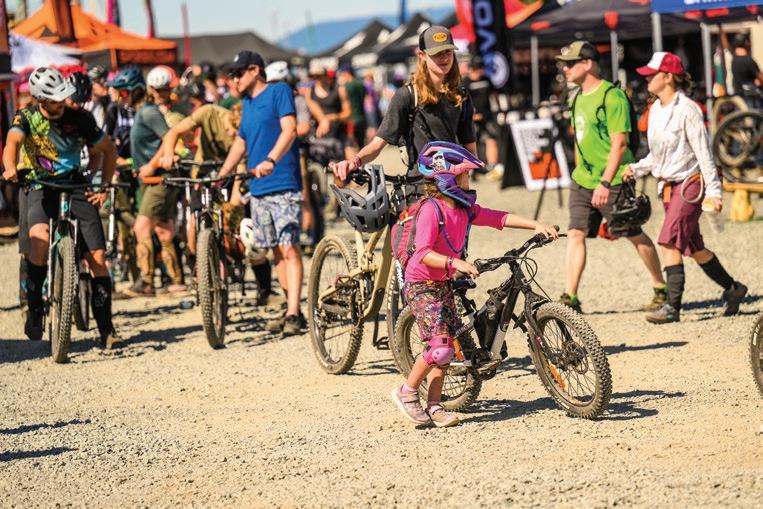




JULY 12-14, 2024


Don’t miss this summer’s premier bike and music festival, July 12–14.
Experience a festival weekend like no other during Northwest Tune-Up in Bellingham, and send it big with three days of world-class mountain biking, the hottest cycling gear to demo, spectator-friendly bike races and a star-studded music lineup—featuring Yonder Mountain String Band, Lupe Fiasco, RJD2 and many more— all set against the scenic backdrop of the Pacific Northwest. For tickets, festival info and the music lineup, visit NWTuneup.com.
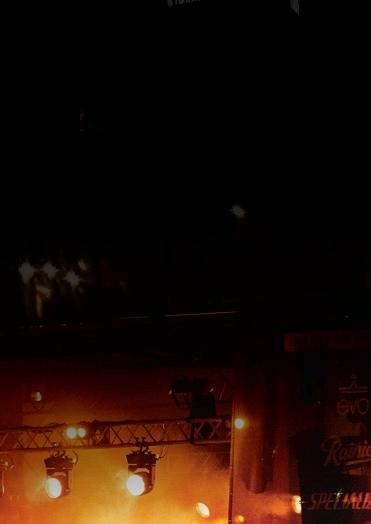




Scan to secure your ticket to the PNW’s biggest bike and music festival.

Send it big in Bellingham.
&Rand Jack Whatcom Land Trust
Celebrating 40 Years of Conservation, Care, and Change
Since 1984, Whatcom Land Trust (the Trust) has worked to protect and steward Whatcom County’s special places for future generations of all species. Adventures Northwest readers have likely experienced that impact without realizing it—perhaps while hiking, biking, or exploring in one of the 19 Whatcom County public parks created with the help of Whatcom Land Trust over the past 40 years. Lookout Mountain Reserve, Stimpson Family Nature Reserve, Teddy Bear Cove, and Galbraith Mountain are just a few. The Trust has also been responsible for preserving Canyon Lake Community Forest, Lily Point, Nesset Farm, Point Whitehorn, Squires Lake, and, most recently, Governors Point.
Thanks to a dedicated Board of Directors, hard-working staff and volunteers, and an abundance of community partnerships, the Trust has now protected more than 26,000 acres of land through conservation easements, land ownership, and facilitation in Whatcom County.
Washington State artist, conservationist, educator, and attorney Rand Jack, who helped co-found Whatcom Land Trust forty years ago, remembers that the Trust “looked to protect a variety of
Story by Claire Johnston
land—particularly natural areas—that would provide [access] opportunities and protect habitat for animals that were here long before we were.”
Rand has long believed that protecting these natural places is critical, “where

people can visit and enjoy and appreciate the land. It’s really hard to convince people to protect something if they’ve never seen it or experienced it.”
Early Roots and Relationships
In March 1983, nearly 50 people gathered in the basement of the Dutch Mothers Restaurant in downtown
Lynden, WA, to learn how a land trust might preserve Whatcom County’s agricultural heritage. After obtaining 501(c)(3) non-profit status, the first official Board of Directors meeting of the Whatcom Land Trust was held in November 1984.
The initial vision was to protect agricultural land to support local farms and farming infrastructure. According to Rand, the Trust quickly broadened its horizons to prioritize protecting parks to ensure public access for future generations. Relationships with landowners and partners were rooted in transparency, integrity, and respect.
The very first County park the Trust helped establish was Teddy Bear Cove–a popular beach with a trail winding through coastal forest and bird habitat to saltwater shoreline and tide pools.
“When it went up for sale, the Land Trust was able to step in and put out a fundraising call to its supporters, raising enough money to acquire the property,” remembers Board Member Chris Moench, who has served the organization since 1990. “And that was done in conversation with the County Parks Director at the time, Roger Despain. We agreed the County would end up purchasing Teddy Bear Cove from the Land Trust. But the Land Trust was able to act quickly, and that was key to preventing development. Now it’s a beloved county
48 The heartbeat of Cascadia >>> Go to to read ANW AdventuresNW.com
Stimpson Family Nature Reserve.
Photo by John D’Onofrio
park, and the Trust holds a conservation easement.”
Stimpson Family Nature Reserve was another early success. When the Stimpson family first approached the Trust, they entrusted Rand with the process of determining how to conserve the family’s land. “It was a long process,” he remembers, “and I think that now the Stimpson family is delighted with what’s happened. Stimpson has been embraced by the community, it is a real sign of possibility, of hope. I don’t know of any other park where you just walk this every day for a week, and you will not see a piece of trash,”
“Conservation for the community, by the community…” is written on the sign marking the entrance to Stimpson Family Nature Reserve. That phrase represents the Trust’s commitment to communityfocused conservation and honors the ongoing and unique partnership with Whatcom County Parks and Recreation.
to create a conservation easement that protected Clark’s Point, just south of Fairhaven in Chuckanut Bay, from further development.
“My strongest memories from the whole engagement around Clark’s Point were sitting down with Doug and Peggy Clark and talking with them, asking
Easement, created in 1990, was a turning point for the Trust. As Rand puts it, “everybody in Whatcom County pretty much knows where Clark’s Point is. If you can protect Clark’s Point, you’re an organization worth paying attention to.”
Scaling Up in Recent Years

As the Land Trust has continued to grow and protect more properties, they have worked to align conservation strategies with other community groups like the Nooksack Salmon Enhancement Association (NSEA), with the Lummi Nation and the Nooksack Indian Tribe, and with other government entities working toward shared conservation values.
“I think a lot of what makes the Trust really engaging for people,” Chris observes, “is that you’re developing a relationship with them, while working toward conservation goals.”
Moench recalled the process of working alongside the Clark family

questions about their relationship with Clark’s Point,” Chris recalls. “They purchased Clark’s Point, and eventually, they had three children, each of whom were allocated a little piece on the point to build their house. One of their children, Patrice Clark, really drove the family’s commitment towards conservation and embraced the concept of a conservation easement with Whatcom Land Trust.”
Due to the property’s prominence, The Clark’s Point Conservation
In 2018, Rand was awarded the first Bellingham Chamber of Commerce Lifetime Achievement Award, and the Land Trust took on its largest land protection initiative yet— the Skookum Creek Wildlife Corridor. Consisting of 2,200 acres of forest, uplands, wetlands, and riparian habitat surrounding two miles of Skookum Creek, this initiative protected a critical cold-water source for the South Fork Nooksack River. In recent years, water levels in the South Fork have become

Acupuncture and Eastern Medicine
The heartbeat of Cascadia 49 stories & the race|play|experience calendar online. 801 Samish Way, Suite 200, Bellingham, WA 512-665-3713 www.kellysell.com
Find balance, harmony, and overcome health challenges so you can keep living the life you love. Live Life Fully.
Rand Jack on the trail at Stimpson. Courtesy of Moment Films
too low and too warm to support salmon populations. Multiple long-term research projects showed that different active forest management practices can result in more available water in the watershed. The Trust aims to implement these management practices in the uplands of the Skookum Wildlife Corridor to increase
the flow of clean, cold water into the South Fork.


“Protecting the Skookum Creek Wildlife Corridor was made possible by all of the community members and partners that were involved in the process. We were able to work with the Lummi Nation and Nooksack Indian Tribe, the private timber company Weyerhaeuser, the Conservation Alliance, and with Trust donors to make this happen,” explains Interim Co-Executive Director and long-time Stewardship Director Jenn Mackey. “It’s really a representation of the larger community effort to recover salmon populations and all the species that depend on them while developing healthy, functioning hydrology in the Nooksack River System.”
The Trust is also collaborating with the Nooksack Indian Tribe, Whatcom County, and Evergreen Land Trust on another large landscape project affecting the South Fork Nooksack River. The Stewart Mountain Community Forest is slated to bring 5,500 acres of forestland into local ownership so it can be managed for the benefit of the local community. The project will enhance watershed health and improve water quality and quantity, promote an ecological forestry-based economy for living-wage jobs, increase biodiversity, and enhance fish and wildlife habitat while expanding

community access for cultural uses and non-motorized recreation. The Trust purchased the first 550 acres on Stewart Mountain in October 2022 and is currently working with project partners to purchase the remaining land.
Projects like Skookum Creek and Stewart Mountain are responsive to current community needs and are centered on intentional, inclusive community engagement. Collectively, the protection and management of Trust properties significantly impact habitat health and connectivity, river system function, and climate resilience.
Carving Birds and Conserving Land
To celebrate 40 years of conservation efforts, the Whatcom Museum, in close partnership with the Whatcom Land Trust, is presenting an exhibition of Rand Jack’s carved bird sculptures, Carving Birds and Conserving Land. From Whatcom County cedar butternut to catalpa wood, maple burls to yew wood to curly redwood, Rand artfully carves nut hatches and rufous-sided towhees, dippers and kingfishers, ravens and woodpeckers, owls and falcons, herons, sandhill cranes and shorebirds. Most of the wood used is locally sourced from friends or gathered from his forested property in Whatcom County.
Rand is driven by his excitement
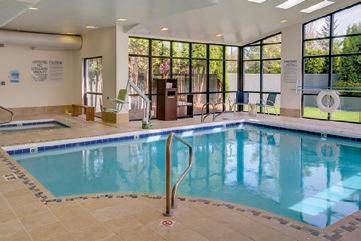

50 The heartbeat of Cascadia >>> Go to to read ANW AdventuresNW.com
• Heated Indoor Pool & Jacuzzi • Complimentar y Express Star t Breakfast • Free High-Speed Internet Access • Iron/Ironing Board • Refrigerator & Microwave in ALL Rooms • Coffee Maker • Kitchenette • Hairdr yer • Near Great Local Restaurants • Free Access to City Gym • Over 50 HD TV Channels with HBO & SHOWTIME SIMPLE SMART TRAVEL For Reser vations Call 1-888-280-8842 • 360-671-4800 4160 Meridian Street in Bellingham, WA w w w hiexpress com/b ellinghamwa Open Daily to Everyone at 7am Downtown Mount Vernon • skagitfoodcoop.com Rise
and Hike!
and fascination when cracking open a stump to discover the unique characteristics of the wood’s interior features. “I saw that the curvilinear shape of birds was the ideal way to display wood. Carving birds combines my love of birds and wood. The graceful shape of birds, honed by evolution, is an ideal place to display the grain patterns, color variations, and richness of wood—combin-

ing two of nature’s creations. After 40 years of bird carving, I am still excited when I open a block of wood to discover what is inside. Sometimes I spend a whole day just trying to guess how to best locate a bird in a particular piece of wood,” explains Rand. “Carving a bird makes me try to understand what that kind of bird really looks like and then make subtle adjustments to accommodate the habituated expectations of the

human eye.”
Rand notes that his perspective on natural systems, conservation, human impacts, and birds has been significantly influenced by his extensive travel about the world, almost always with his wife, Dana.
After law school, Rand, Dana, and Lorita, the parrot, spent six months in a Volkswagen camper van, driving on virtually every passable road in Central America. Since then, he has explored some of the most exotic places in the world. He has trapped and banded birds in the Peruvian and Ecuadorian Amazon Basin and Skagit County, lived in Nepal for a year, trekking into remote areas of the Himalayas, tracked lemurs in Madagascar, canoed the Zambezi River, and walked a safari in Zambia. He’s sea kayaked the west coast of Vancouver Island, the Queen Charlotte Islands (now Haida Gwaii), and parts of central Alaska. He and his family have also explored a good bit of the USA. Rand’s own 40-acre backyard in the Mt. Baker foothills is protected by a Trust conservation easement.
Carving Birds and Conserving Land brings together 20 of his sculptures, all tucked into and around the bird displays in the museum’s John M. Edson Hall of Birds in Old City Hall, on display through October 27. It illuminates how Rand puts into practice—through his artistic pursuits and his work with the Trust—his commitment to conserving and stewarding the natural world and






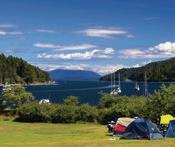
POETRY FROM THE WILD Otter
By Sam Green
If you’ve ever seen an otter swim, one long, intelligent muscle, supple as new rope, how it moves like ink caught in a current, then you’d know how wrong it feels to see this one loping in a panic along the center of a dirt road a quarter mile from the bay, a heavy bag of thick skin, rear end humped like the base of a clumsy S tumbled on its side, twisting at the neck to watch our truck looming behind through the dust, you’d maybe recall that dream of something large & dark coming toward you down the suddenly unfamiliar road of your life.
making it available for responsible use by those who live here and visitors seeking the beauty of nature.






The heartbeat of Cascadia 51 stories & the race|play|experience calendar online.
ANW
Rand Jack in his workshop.
Clean Quiet Electric Propulsion since 2006 • Day Trips • Sunset Cruises • Gift Certificates Available • Both Private & Open (By the Head) Trip Options www.gatoverde.com 360-220-3215 Low Guilt Wildlife Viewing Aboard an Ultra Sustainable Vessel! book online @ bluelatitudepress.com Shawn Breeding and Heather Bansmer A Boater’s Guidebook GULF ISLANDS San Juan Islands: A Boater’s Guidebook is the newest, most up to date guide, featuring the vibrant and pristine anchorages of Washington state’s cherished San Juan Islands. This comprehensive guide details the favorite and the off the beaten path anchorages and harbors found within the islands, including the nearby mainlandmative narration and helpful mileage charts, is must have guide for every boater. The harbors and anchorages listed in this guide are illustrated with over 70 GPS accurate charts, derived from satellite photography, US government charts, topographic data, and first-hand exploration. GPS waypoints, along with prime anchorage locations, accompany each chart. Important boating information such as marina locations and layouts, fuel availability, weather, customs information, full listing of area NOAA charts, boat haulout facilities and marine chandleries and services are among few of the many features detailed throughout the guide. And because boating doesn’t stop when the hook is dropped or docklines are tied, local sights to see, hiking trails, restaurants, grocery stores, museums and more are also detailed. you make the most out of your time while boating within these magical islands. Vivid color photography illustrating the immense beauty of life within the islands makes this book not only a valuable planning aid to mariners, but also fantastic way to relive your vacation or just to daydream of peaceful, idyllic days in the San Juan Islands. Blue latitude Press www.bluelatitudepress.com SAN JUAN ISLANDS Boater’s Guidebook Shawn Breeding and Heather Bansmer have been cruising and researching since 1998, waters of Pacific Mexico. They are also the authors of and the best selling Mexico guides, Sea of Cortez: A Cruiser’s Guidebook and Pacific 54995> A Boater’s Guidebook SAN JUAN ISLANDS Shawn Breeding and Heather Bansmer Shawn Breeding and Heather Bansmer 2nd Edition Your BOATING GUIDeS to the I SL AN DS
Photo courtesy of Whatcom Land Trust
Cycology
Summer Cycling and Climate Change
Let’s start with an obvious fact: most people don’t love bicycling on cold, dark, and rainy days. Shocking, right?
Sure, I ride through the winter, wrapped in sweaty waterproof clothing and rain booties–but it’s an act of determination, not joy.
Summertime is when everyone becomes a cyclist. Long sunny days eliminate excuses and beckon us outside to explore and enjoy the beautiful Pacific Northwest, home to scenic landscapes that rival any place in North America. As someone who moved here in 2015, I wish someone had told me earlier that it doesn’t rain all the time in Seattle.
Here are some of the summer rides and routes I plan to pedal this season:
• The Seattle to Portland Bicycle Classic, July 13-14. First held in 1979, Seattle to Portland (known as STP to its legions of fans) is one of the nation’s longest-running big group rides, attracting thousands of people annually to bike 206 miles over one or two days.



• RSVP, or the Ride from Seattle to Vancouver and Party, Aug. 24-25. This ride began when Mt. St. Helens erupted, forcing Cascade Bicycle Club to cancel STP and re-route cyclists northward. People loved it, and another classic Pacific Northwest ride was born.
• The Palouse to Cascades State Park Trail spans 287 miles from the Cedar Falls Trailhead near Seattle to the Idaho border. Some folks ride it in one long push, packing water, food, and camping gear. I’ve been ticking off sections of the trail every summer, and this season, I plan to pedal the segment between Ellensburg and the Beverly Bridge that passes over the Columbia River.
• The three-day Port Townsend Tour, Aug. 16-18, is an excellent opportunity to explore the historic sites and coastal scenery near this Victorian community known for its wooden boats and high quality of life. This ride is one of four three-day tours organized by Cascade Bicycle Club.
Summers here offer some of the best weather of anywhere I’ve lived–from New England to Colorado to Northern California. Unfortunately, the weather isn’t what it used to be.
Climate change is rapidly altering the patterns we’ve come to think of as normal. Heatwaves, catastrophic wildfires, and smoke-filled air have become more common. Climate change is not only a threat to bicycling but also to every outdoor activity we love as adventure seekers and nature lovers.
Washington state voters have a big decision to make in November. Ballot Initiative 2117 seeks to kill the state’s Climate Commitment Act adopted in 2022. I’ll be voting NO. How will you vote?
Think about it when you’re outdoors this summer, enjoying a beautiful bike ride, celebrating the magnificence of the Northwest, and wondering what it means to be a bicyclist.
by Paul Tolme ANW

52 The heartbeat of Cascadia >>> Go to to read ANW AdventuresNW.com
Local Knowledge One-on-One Customer Service Hand-Picked, Trail-Tested Gear Tents, Backpacks, Sleeping Systems, Supplies Open 7 Days a Week in Downtown Winthrop! 222 Riverside Ave., Winthrop, WA 509-996-3480
Photo by Pavel Danilyuk
cascadesoutdoorstore.com
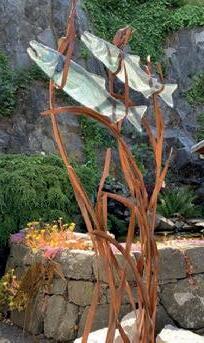






The heartbeat of Cascadia 53 stories & the race|play|experience calendar online. Happy Hour - Weekdays 3-6 pm Everything looks better framed. 1415 Cornwall Avenue, Downtown Bellingham 360.650.1001 bellinghamframeworks.com BELLINGHAM FRAME W ORKS PICTURE FRAMING & DESIGN Waterfall 701 S 1st St, La Conner, WA 360-399-1202 info@waterfallgallery.com Art, Decor & Furniture Gallery Inspired by the Pacific Northwest From the Proprietors of The Wood Merchant Gallery For over 40 years offering the Northwest’s best selection of fine 100% American-made woodcrafts. Gifts • Furniture • Salad Bowls Jewelry Boxes • Wood Carvings Cutting Boards • Custom Designs Available 709 South 1st Street • La Conner, WA 98257 • info@woodmerchant.com 360-466-4741 • woodmerchant.com • facebook.com/woodmerchant
Field Trip
Adventures beyond the PNW
The Fairweather Range
Story
and
Photo by Alan Sanders

Southeast Alaska is not known for its great weather, and on many of my trips to that area, starting in 1978, I’ve seen my share of rain. But occasionally, the weather gods have smiled upon me. One such occasion was a recent trip to Glacier Bay, when the ubiquitous clouds parted, affording spectacular views of the monumental Fairweather Range. This great
northern range is part of the St. Elias Mountains, stretching from British Columbia into Alaska. Mt. Fairweather (15,266 feet), which straddles the Alaska-B.C. border, is the tallest mountain in B.C.
Native tradition says that Mt. Fairweather and Mt. St. Elias (18,008 feet, located on the Alaska-Yukon border) used to stand next to each other.
Apparently, they got into an argument and separated at some point, and the mountains that crowd the horizon in between—including those shown here—are their children. I found myself entranced by the clouds dancing across the peaks, casting ever-shifting shadows on the icy vastness, a scene of unspeakable grandeur. ANW
54 The heartbeat of Cascadia >>> Go to to read ANW AdventuresNW.com


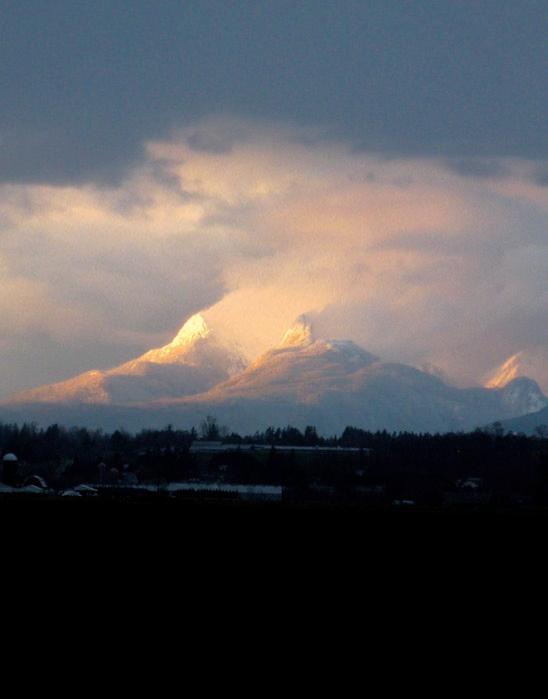


The heartbeat of Cascadia 55 stories & the race|play|experience calendar online. THE BEST SERVICE, FOOTWEAR & MORE SINCE 1940. 420 E FAIRHAVEN AVE, BURLINGTON | 360 755 0570 | MON SAT 9 6 360.676.1977 • www.lithtexnw.com
Cascadia Gear: Essentials for your next Adventure

Outdoor Tech BOLT Bluetooth Speaker
Considering its diminutive size and light weight (1 lb.), the BOLT Bluetooth Speaker from Outdoor Tech® delivers respectable sound quality when you’re on the go. It’s also waterproof, has device-charging capability, and includes a super strong magnet so you can attach it to your bumper or barbecue grill.
More info: www.outdoortechnology.com
Helly Hanson HH Verglas Tur Pants 2.0
Hiking pants need to be tough. But they should also be comfortable. The Men’s Verglas Tur Pants 2.0 from the good people at Helly Hanson delivers on both counts. The insteps, seat, and knees are all reinforced, and the fabric is remarkably stretchy. The articulated knees further enhance ease of movement. Plus, they’re breathable, water-resistant, and lightweight.
More info: www.hellyhansen.com
Arctic Traverse, by Michael Engelhard; Mountaineers Books, Seattle, 2024
Book Review by Cathy Grinstead



WhenWhat makes a travelogue a great read? In my opinion, it uses the trip’s events as a springboard for reflection and exploration and asks important questions about our impact on the landscape and what we can do to minimize it. The basic story of writer Michael Engelhard’s book, Arctic Traverse, is a summer backpacking and paddling trip across the Brooks Range in Alaska. He recounts the details of his daily hikes or paddles while following Thoreau’s advice to “ruminate while walking.” Each day’s events trigger explorations of subjects that arise from his reflections along the way, and in the process of detailing his trek, he often goes off on a delightful tangent.
As expected, the area’s human history is colorful, and the author introduces us to many of these important individuals. We learn about Olaus and Mardy Murie, Bob Marshall, Aldo Leopold, and other well-known and lesserknown people who came into the region and worked to preserve it, both Indigenous and white Americans. Engelhard’s knowledge of the natural history of the range is extensive. We learn about climate and its change, geology, botany, zoology, entomology, and how the human presence in the area has impacted them all.
Engelhard concludes his book with reflections on the future of the area and the effects humans have had on it. “If we can’t save the land, it cannot save us. But apart from our requirements, wild landscapes and creatures exist with autonomy and their own right to thrive. We need an ethic reflective of this reality.” He takes comfort in noting that “in the long, geological view, our affluence and profligacy, our trials and technocrats’ triumphs shall count for nothing.” Although harsh (yet consoling), these final words and the stories and knowledge the author has shared remain with us long after finishing the book.
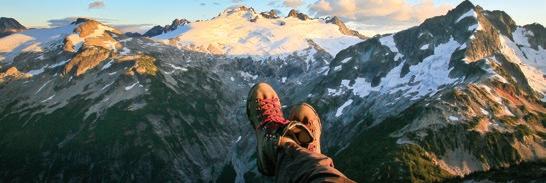
Gear Spotlight:
by Chris Gerston

it comes to high-end sleeping bags, most would agree that Western Mountaineering (WM) makes the very best. With proper care, this might be the last sleeping bag you’ll ever need to purchase. Backcountry Essentials is proud to carry these bags, made in the USA, because they deliver some of the best nights’ sleep you’ve ever had.
Are you a warm-weather camper where weight is a primary factor? Try the Summerlite 32º bag at 1 lb. 3 oz. (6’ bag). Or are you a true 3-season camper, where warmth is worth a little more weight? The Ultralite 20º bag is still less than 2 lbs., but the horizontal continuous baffles allow you to move more or less of the down to the top of the bag to accommodate both warmer and colder nights. WM also makes the Terralite 25º bag that accommodates those who prefer a roomier semirectangular bag instead of a mummy fit. Most bags are available in sizes of 5’6”, 6’, or 6’6”.
One of my favorite things about Western Mountaineering is the flexibility to customize special order bags. Are your feet always cold? How about an extra 2 oz. of down in the footbox? Or, if you want to extend that 3-season bag for winter camping, put that extra fill in the chest area.
Western Mountaineering sleeping bags offer both versatility and comfort, and their unlimited lifetime warranty against manufacturer defects is a testament to their confidence that this might be the last bag you’ll ever need.
Backcountry Essentials, owned by Chris Gerston, is an outdoor specialty shop located at 214 W. Holly in Bellingham, WA.

BearVault BV475 Bear-Resistant Food Canister
I’ve used BearVault bear cans for many years, and they’ve never let me down. Neither grizzlies in Alaska nor raccoons on the Olympic Coast could have their way with them, and they’re easy for humans to get into; no tools required. The BC475 is a nice size—it weighs 2.25 lbs and offers 2.5 gallons of storage space, enough for 5-6 days on the trail. Like all BearVault cans, the wide opening aids rummaging and is transparent, making locating that last pouch of Chicken Teriyaki easy.
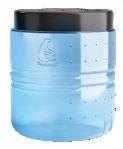
More info: https://bearvault.com
FIND Adventures Northwest is available free at hundreds of locations region-wide: throughout Whatcom, Skagit, San Juan, and Island counties, at select spots in Snohomish, King, and Pierce counties, and in Leavenworth, the Methow Valley, Spokane, and Wenatchee. The magazine is also available at REI locations across Washington and Oregon as well as at numerous locations in the Vancouver, BC metro area, at races and events, and area visitor centers.
SUBSCRIBE Receive Adventures Northwest via mail anywhere in the US or Canada. Visit AdventuresNW.com/subscribe for subscription info.
ADVERTISE Let Adventures Northwest magazine help you reach a diverse, receptive audience throughout the Pacific Northwest, and be part of one of the most valued and engaging publications in the region. Info is at AdventuresNW.com/advertise or by writing to ads @ AdventuresNW.com.
CONTRIBUTE Adventures Northwest welcomes original article queries—including feature stories, expert advice, photo essays, the Next Adventure shot, etc. For information: AdventuresNW.com/contribute.
EVENTS Have your outdoor-related event, race or public outing listed in our comprehensive online events calendar. Visit AdventuresNW.com/submit-your-event to post events or contact ads @ AdventuresNW.com for details
56 The heartbeat of Cascadia >>> Go to to read ANW AdventuresNW.com
Check out more of Chris’ gear reviews at AdventuresNW.com Sponsored review
WM Summerlite 32° Bag
DON’T GET UP. WE DELIVER. Subscribe for Home Delivery! www.adventuresnw.com/subscribe ADVENTURES NORTHWEST magazine





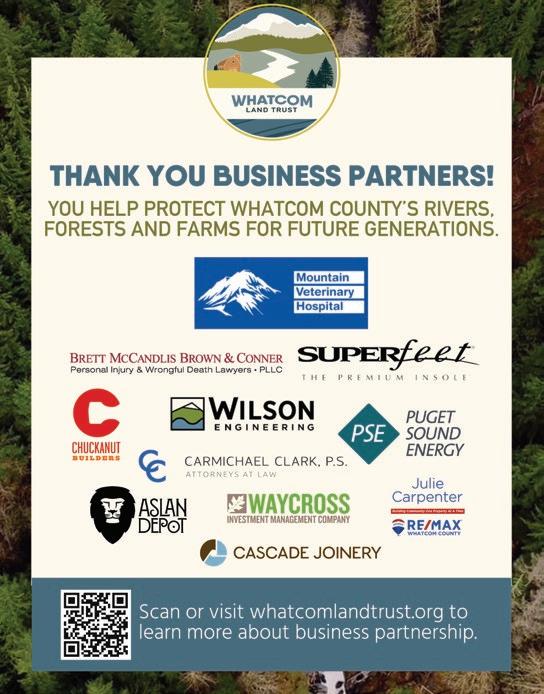


The heartbeat of Cascadia 57 stories & the race|play|experience calendar online. www.jazzcenterofbellingham.org SUMMER 2024! 2nd & 4th Wednesdays SHOWS START AT 6:30PM Doors & Tickets at 5:30 THE FIREHOUSE ARTS & EVENTS CENTER 1314 Harris Ave, Bellingham $20 admission, $10 students JUNE 12 TH : COMFORT FOOD BAND (World Fusion) 19TH : THE JAZZ EXPLOSION! SPECIAL GUEST: MARINA ALBERO (3rd Wednesday Concert) AUGUST 28TH : OPEN HOUSE! LIVE MUSIC, AUCTION, RAFFLE. FREE ADMISSION! SEPTEMBER 11TH : IN MOTION QUARTET W/ KEVIN WOODS 25TH : ITAMAR EREZ QUARTET Technical Excellence & Integrity Since 1999 1491 Old Samish Rd., Bellingham 360.676.8855 • superiorautonw.com “Great diagnostic skills, unquestionable honesty and reasonable prices: Superior has it all!”
Photography Workshops & Tours Learn more at www.adventuresnw.com/photo-workshops Join Us in the San Juan Islands October 10-13, 2024
ADVENTURES NORTHWEST
Instructors Alan Sanders & John D’Onofrio
N Adventure the ext

The Stone Kingdom
Having hiked six hours to arrive at the head of Foss Valley, I faced the final 1000-foot climb up a crumbling medial moraine and shifting talus. It was the easiest part of the trip. With the valley headwall on my left and Mt. Hinman behind, I had a renewed sense of purpose. I passed the beautiful ruins of Tank Lakes and made camp on “The Green Apron,” where the north faces of The Stone Kingdom: Summit Chief, Overcoat, Chimney, and Lemah are served on a grand platter of heather, granite, and a ruddy garnish of mountain blueberry, all overlooking the Middle Fork of the Snoqualmie River. Fog obscured the views for a day, but it lifted on the second evening, revealing this inspiring panorama of gleaming peaks beneath a dramatic sky.
58 The heartbeat of Cascadia
photo by DAVID INSCHO

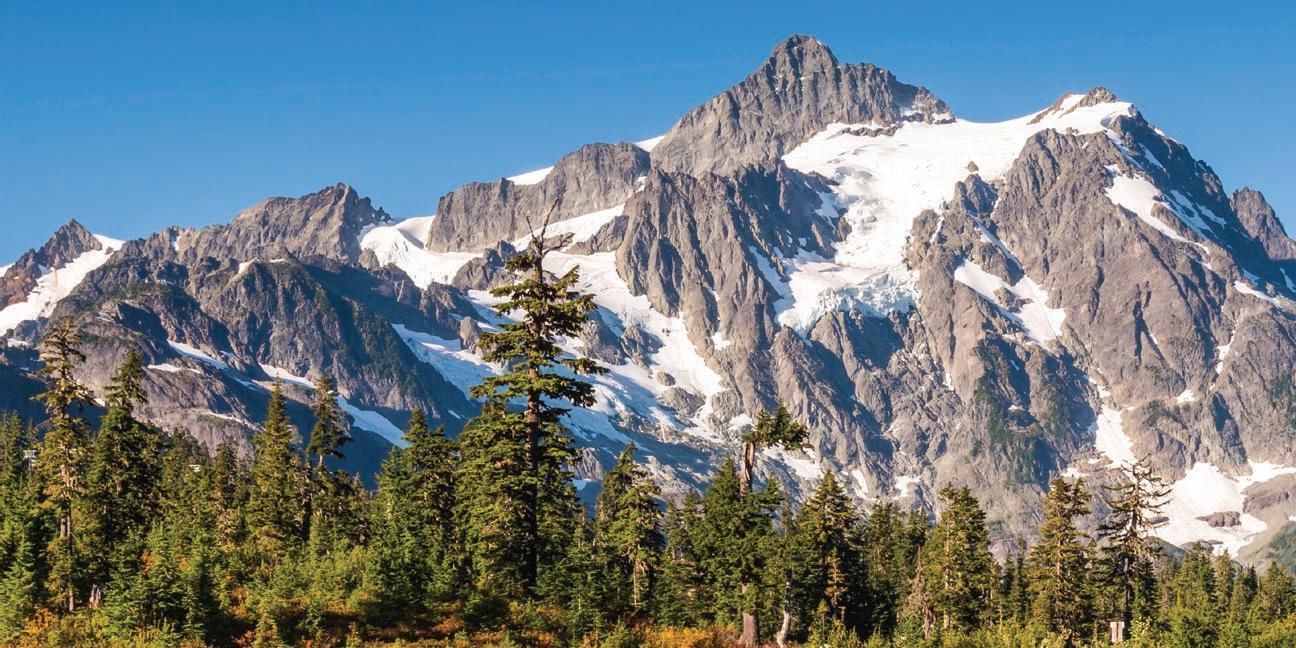
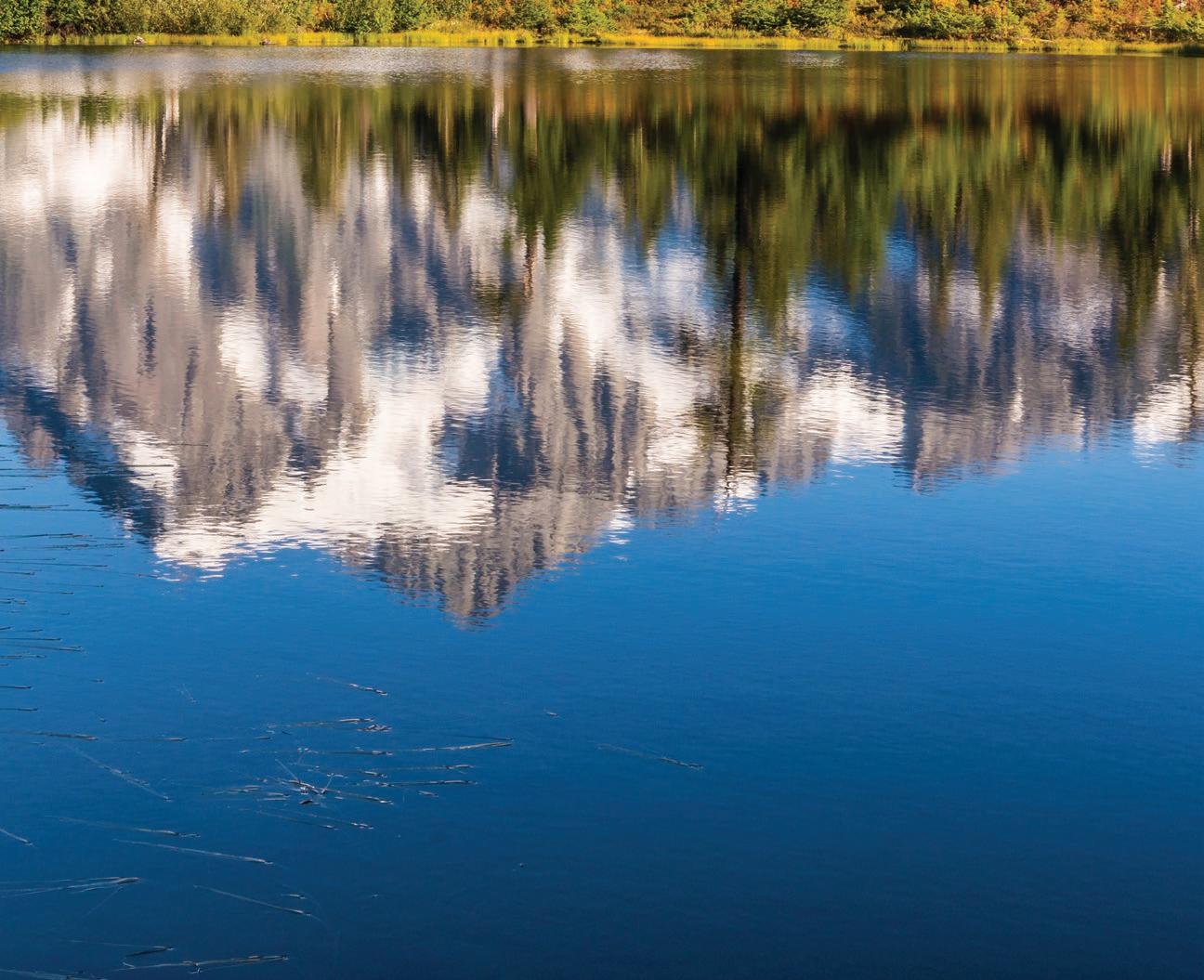

AUG. 31-SEPT. 1, 2024 • SAT-SUN LABORDAY WEEKEND ARK ANSAUCE NEVER COME DOWN UNDER THE ROCKS FARMSTRONG ROOSEVELT ROAD PLUS 6 ACC ESS LIVI NG SHO W CASE BANDS FESTIVAL HOSTED BY THE WORKSHOPS GALORE • PRO JAM (SAT NIGHT) OPEN MIC •BEER & CIDER GARDEN FOOD & CRAFT VENDORS CAMPING: AUG. 27 – SEPT. 3 (TUES TO TUES) INFO@NCBF.FUN | WWW.NCBF.FUN | WWW.FACEBOOK.COM/NCBF.FUN KRUGER BROTHERS 1 DAY INTENSIVE MINI-ACADEMY GUITAR, BANJO & BASS FRIDAY, AUG. 30 (ADDITIONAL FEE REQUIRED) DE M ING LOGGING SHOWGROUND 3295 CEDARVILLE RD, BELLINGHAM, WA 98226


Investment advisory services provided through Mariner Platform Solutions, LLC (“MPS”). MPS is an investment adviser registered with the SEC, headquartered in Overland Park, Kansas. Registration of an investment advisor does not imply a certain level of skill or training. MPS is in compliance with the current notice filing requirements imposed upon registered investment advisers by those states in which MPS transacts business and maintains clients. MPS is either notice filed or qualifies for an exemption or exclusion from notice filing requirements in those states. Any subsequent, direct communication by MPS with a prospective client shall be conducted by a representative that is either registered or qualifies for an exemption or exclusion from registration in the state where the prospective client resides. For additional information about MPS, including fees and services, please contact MPS or refer to the Investment Adviser Public Disclosure website (www.adviserinfo.sec.gov). Please read the disclosure statement carefully before you invest or send money. Mauro Capital Management, LLC 1514 12th Street, Suite 101, Bellingham, WA 98225 Wealth Planning and Dogs… What Could Be Better? We love dogs, so you’ll find treats and a water bowl in our lobby. We’ll warmly welcome you and your fur baby when we meet to build a wealth plan for your whole family.





























































































































































































































































































































